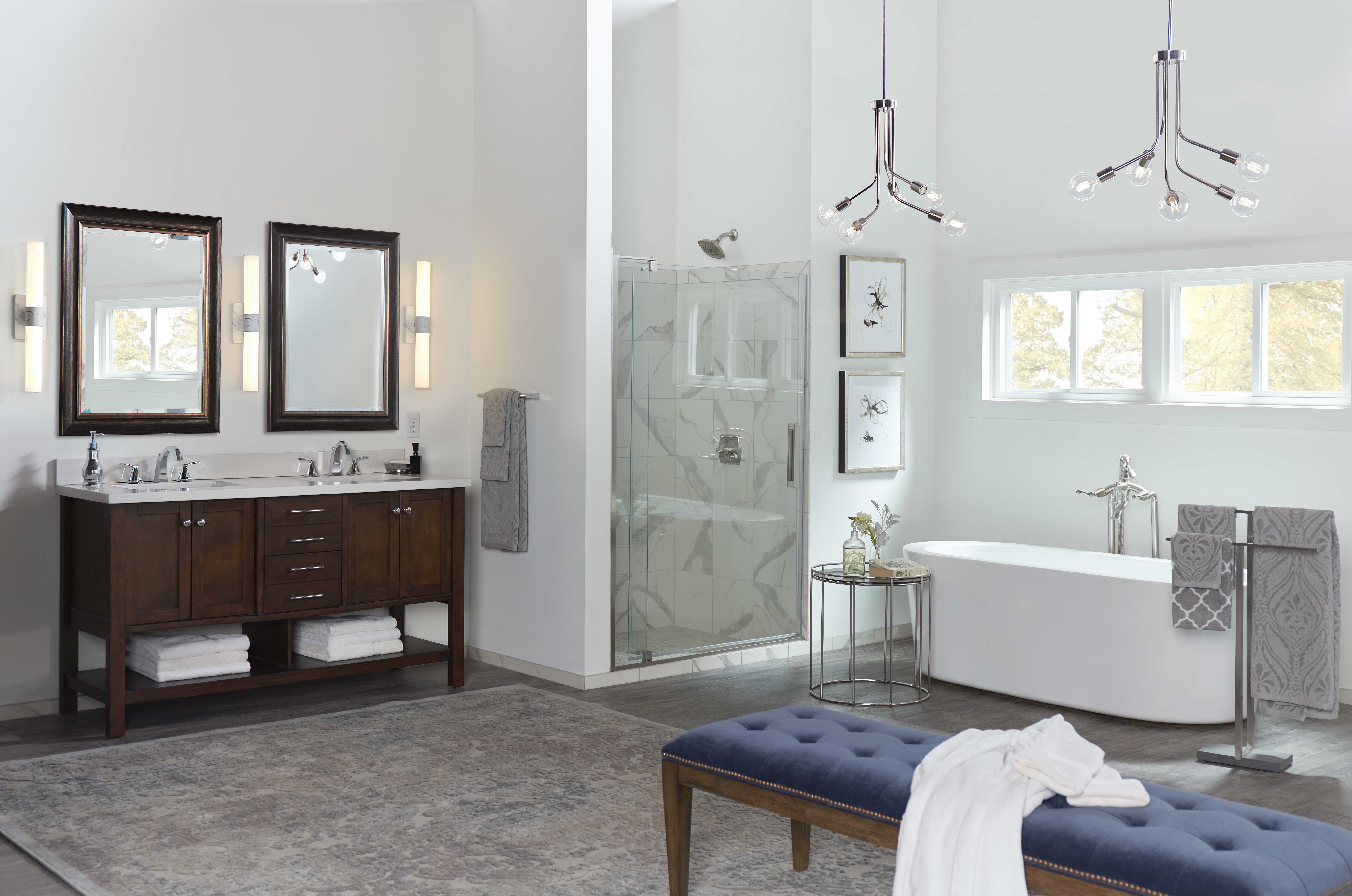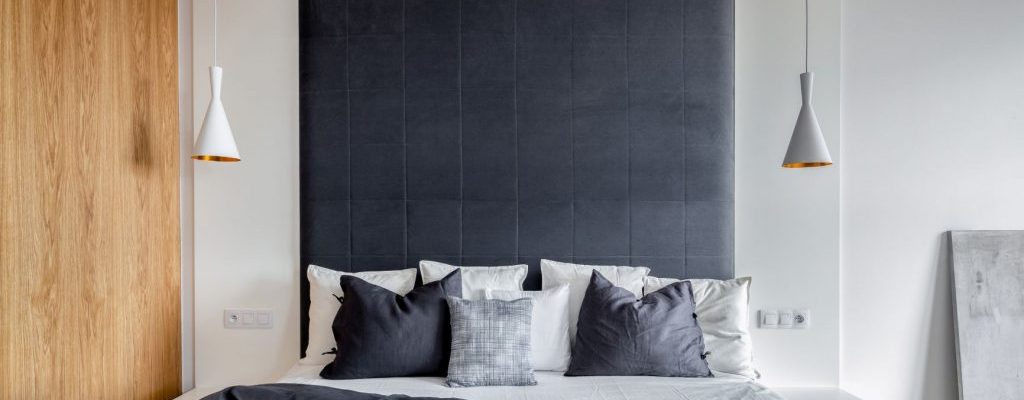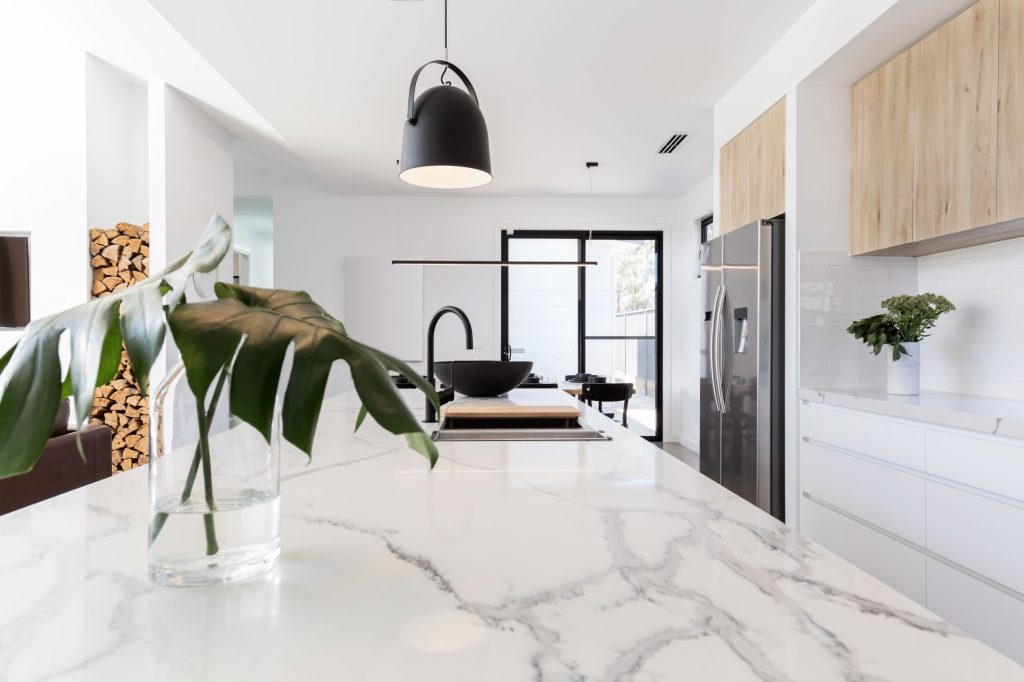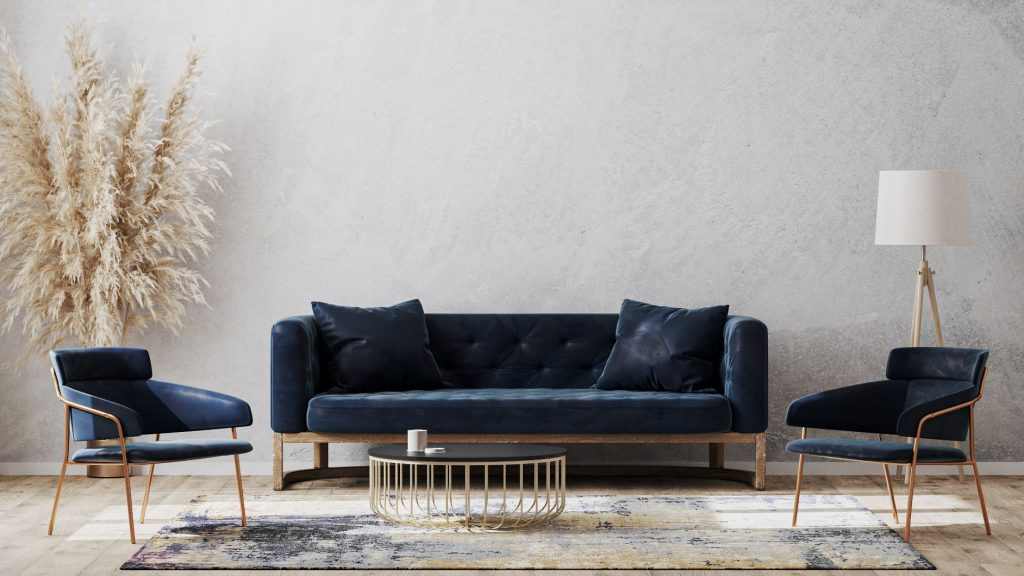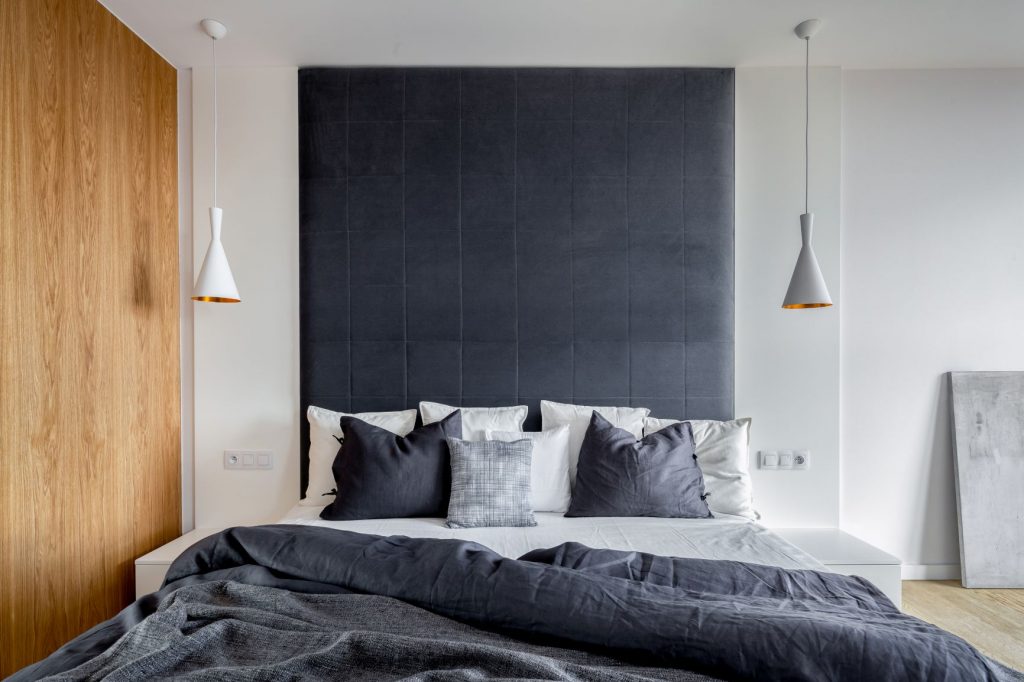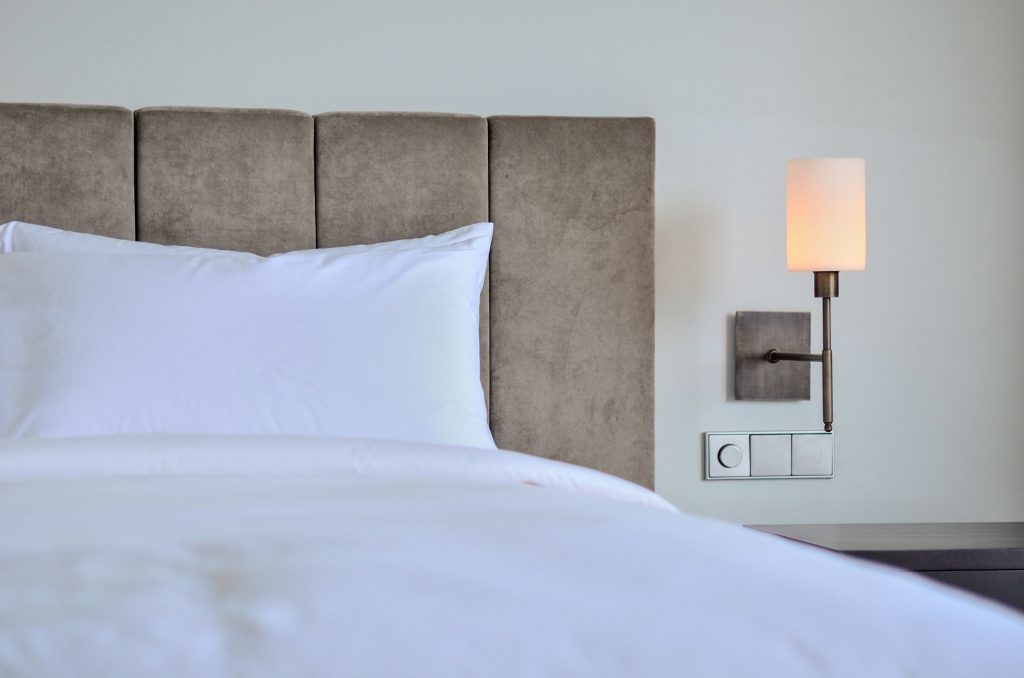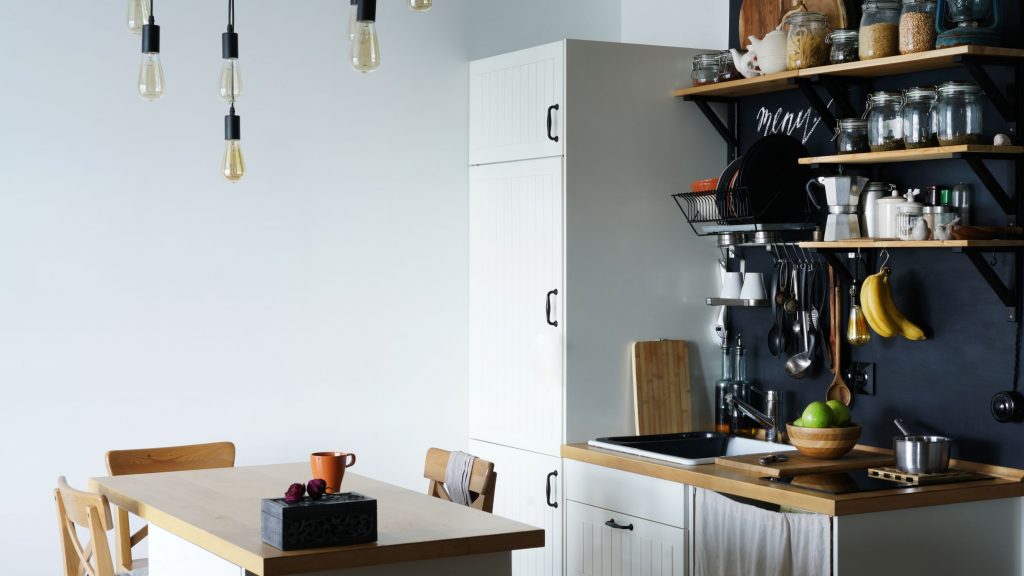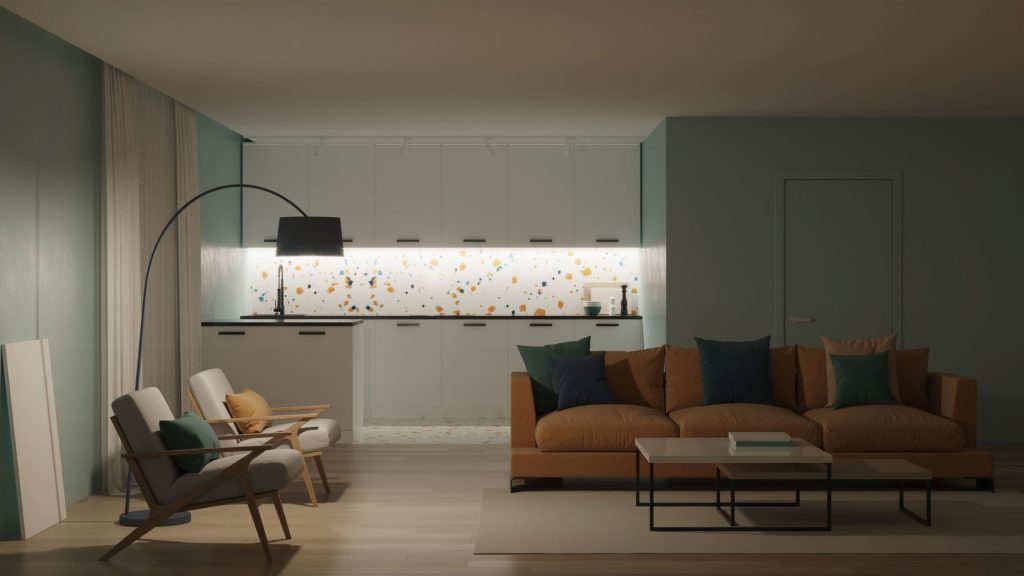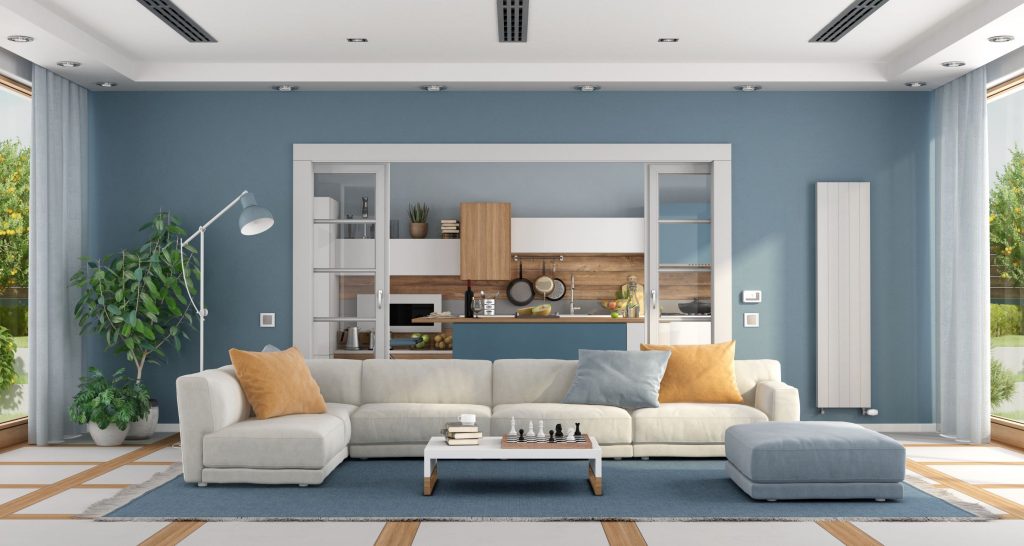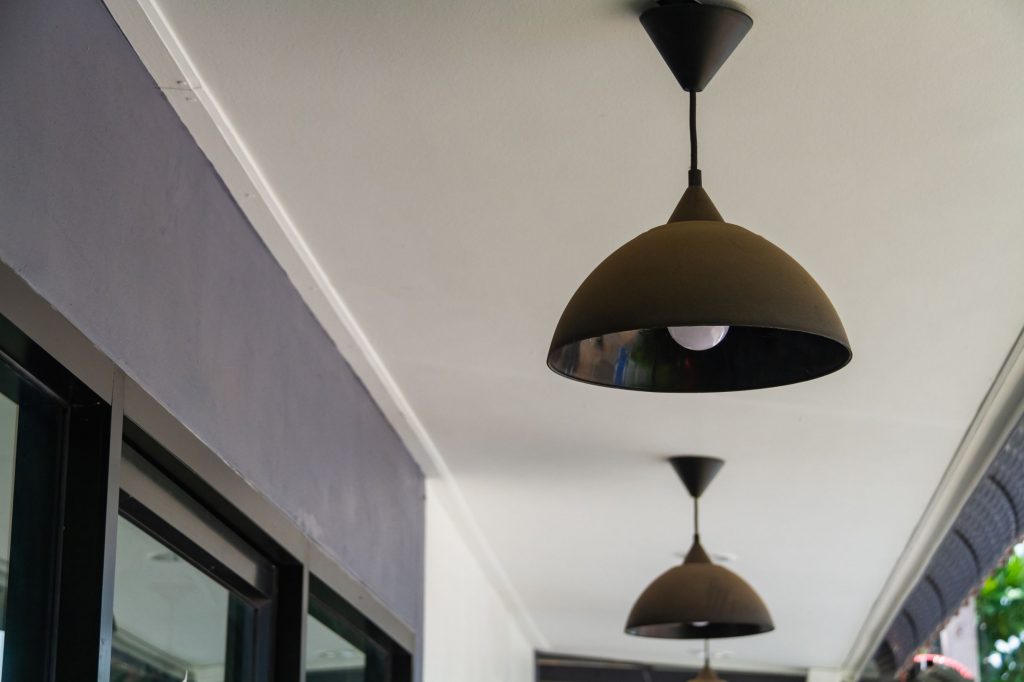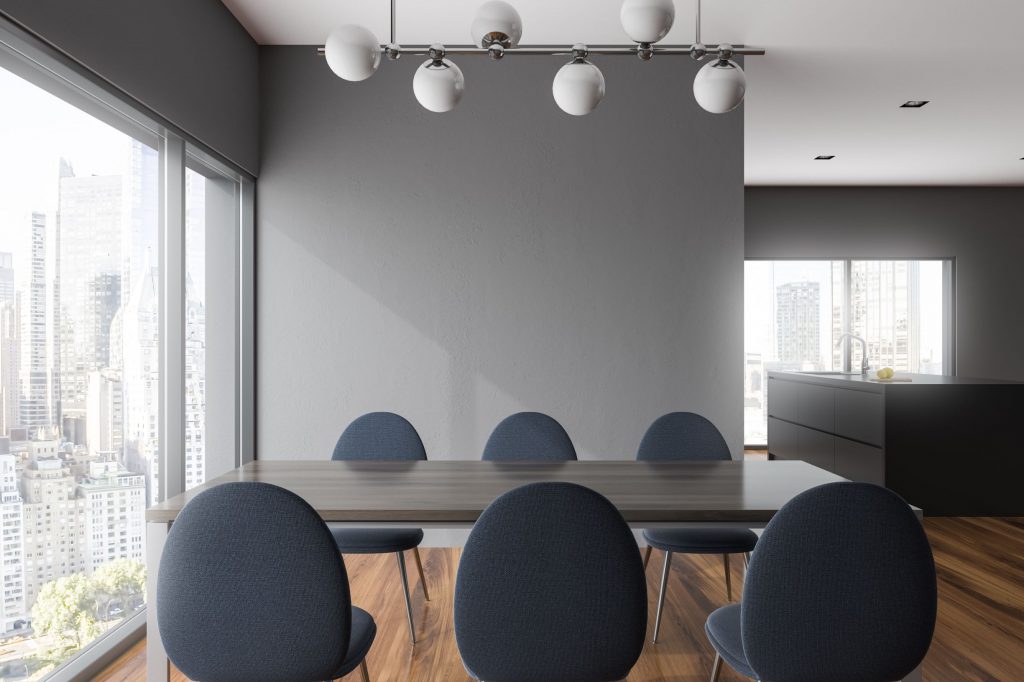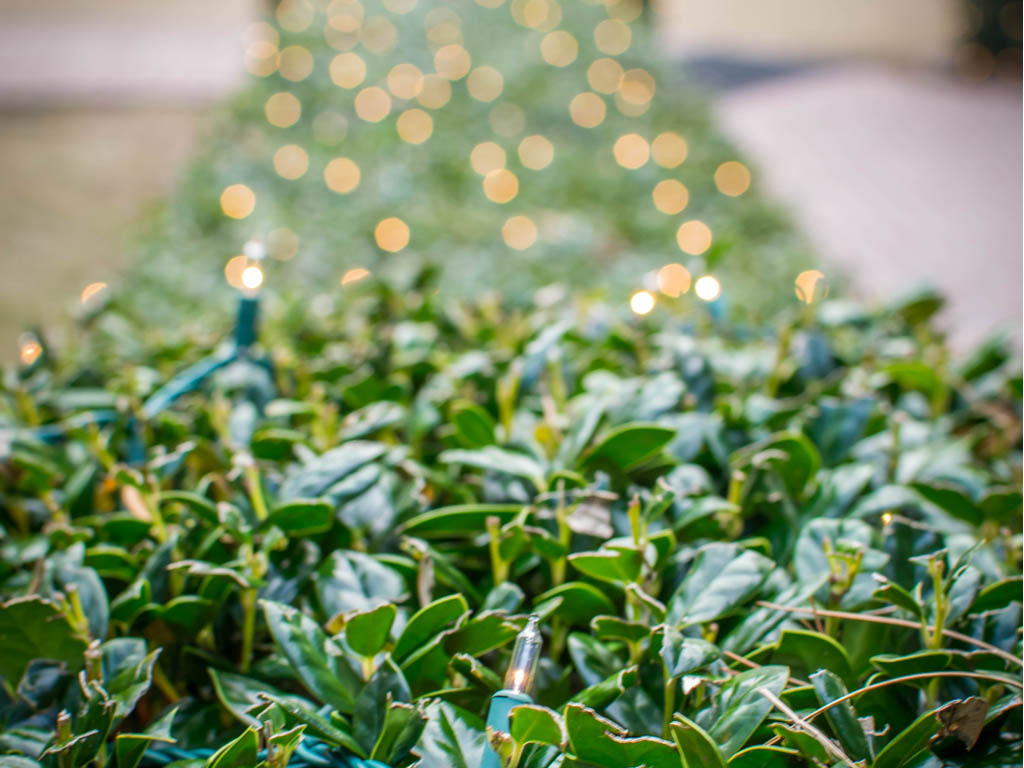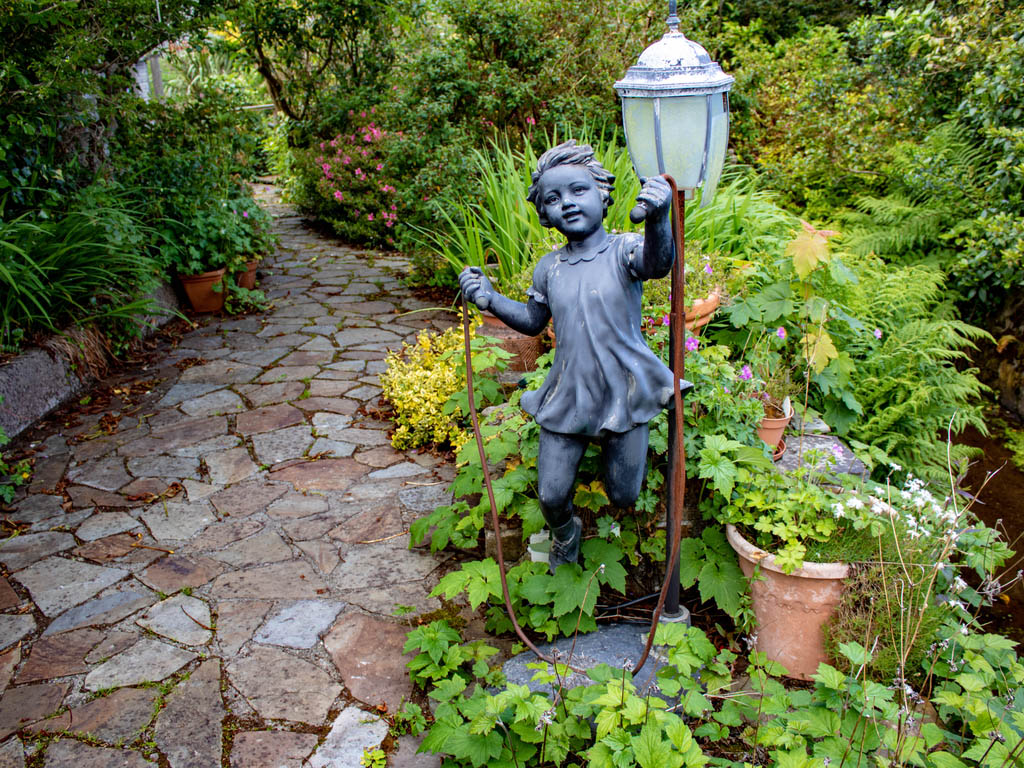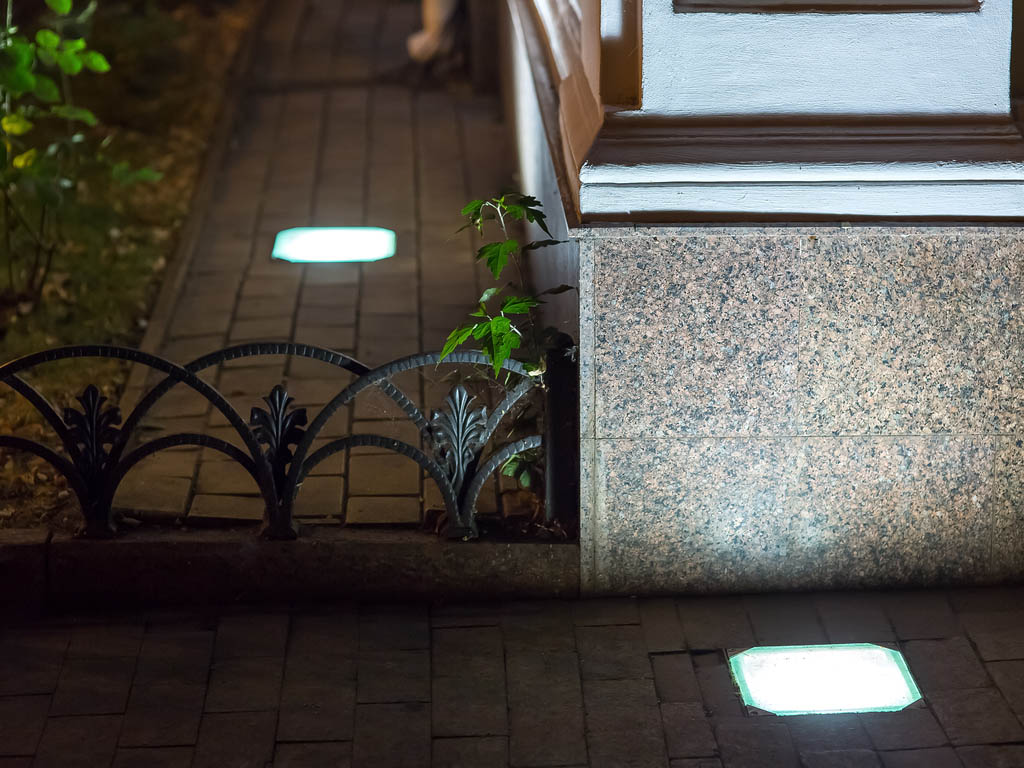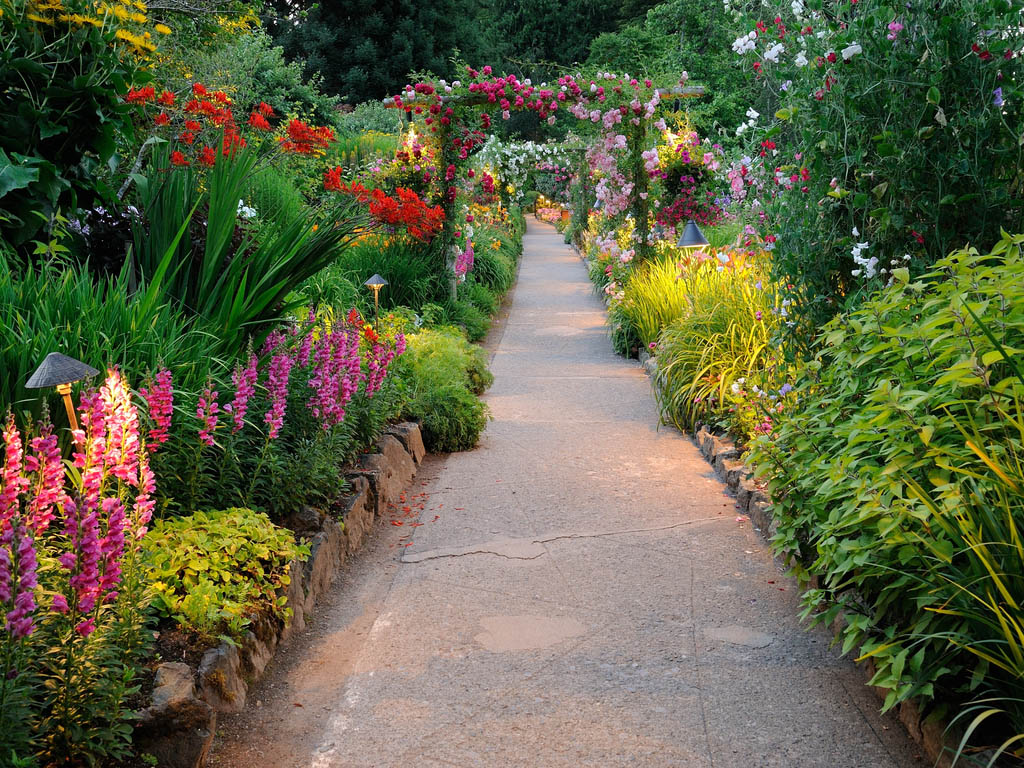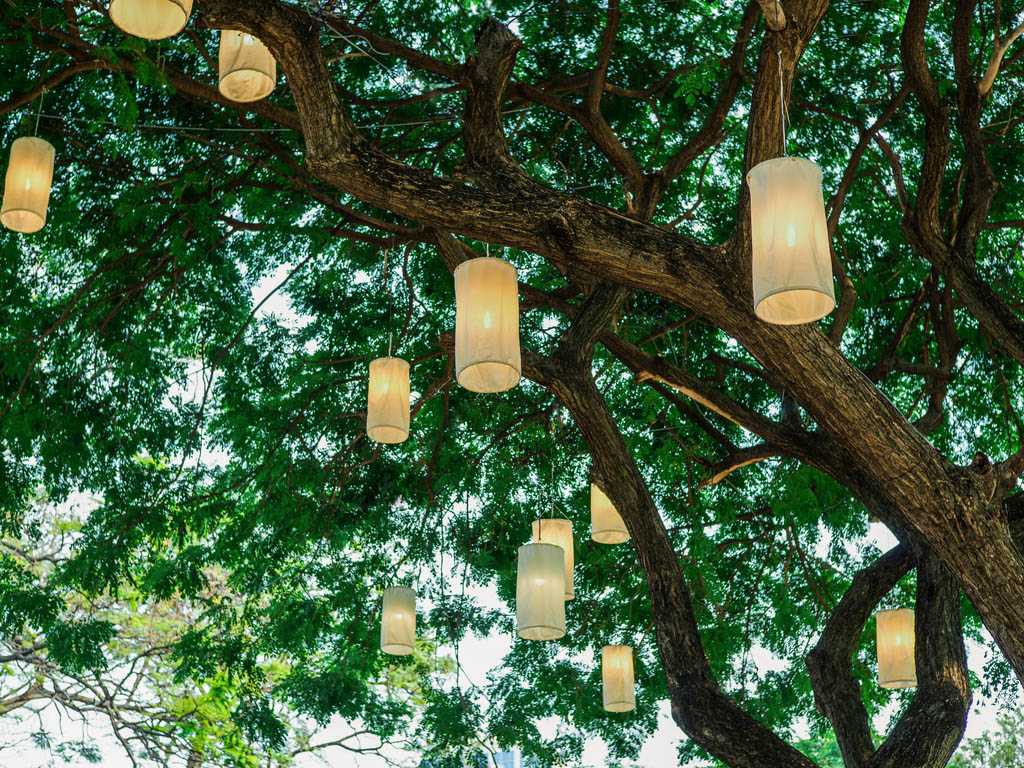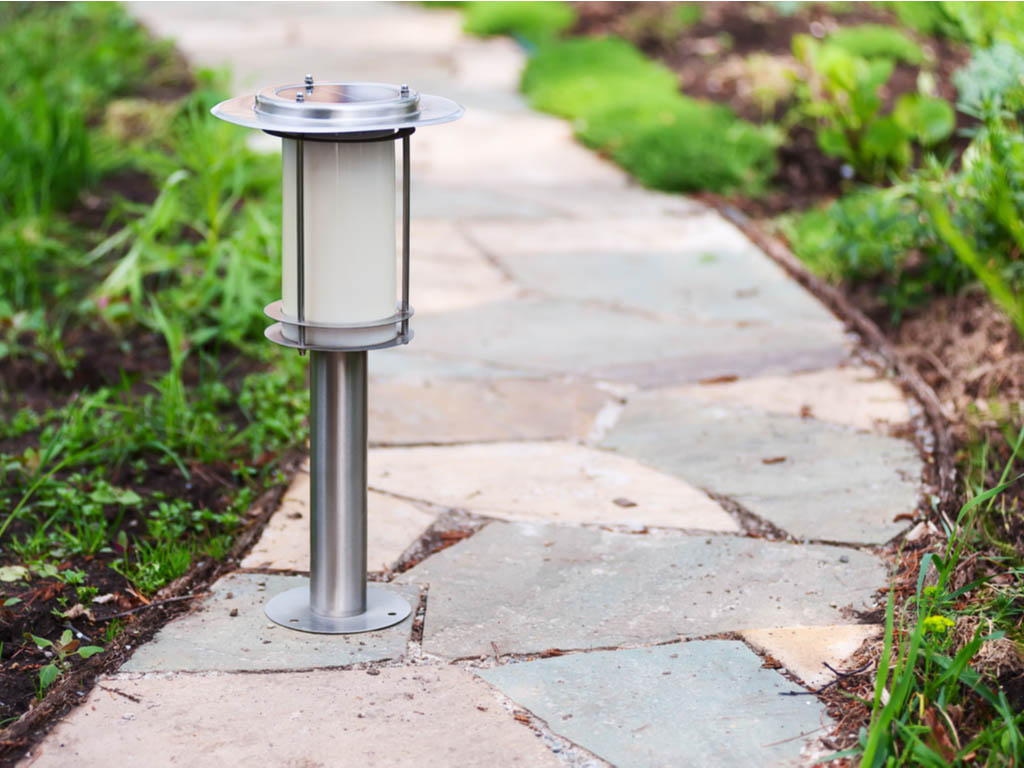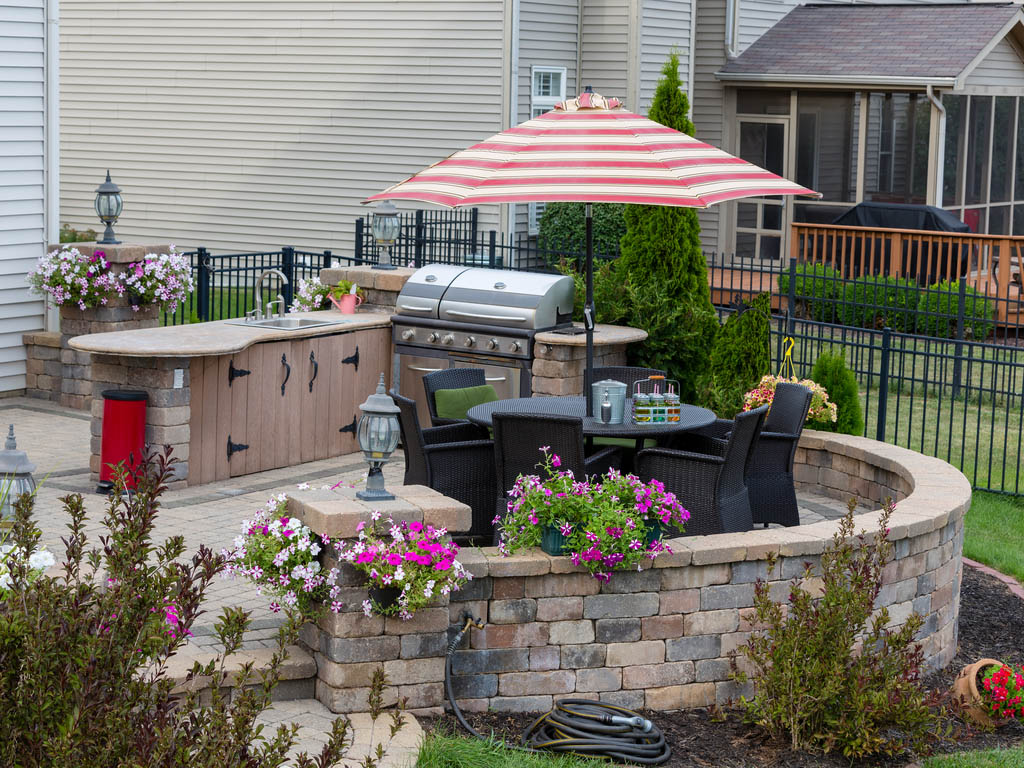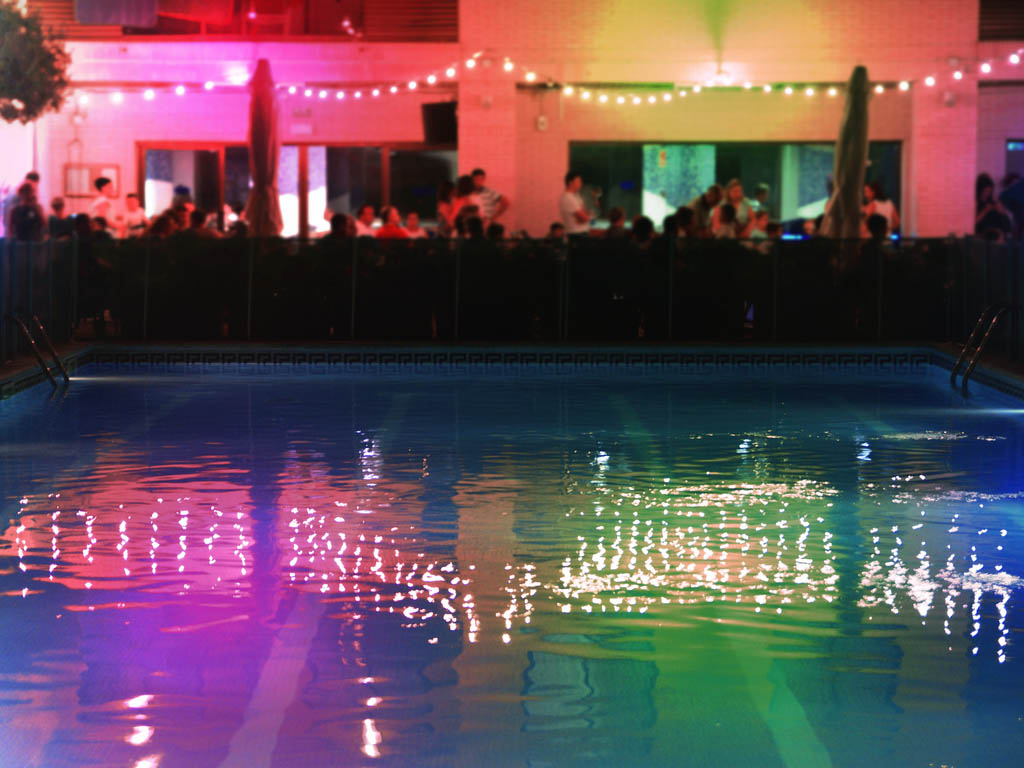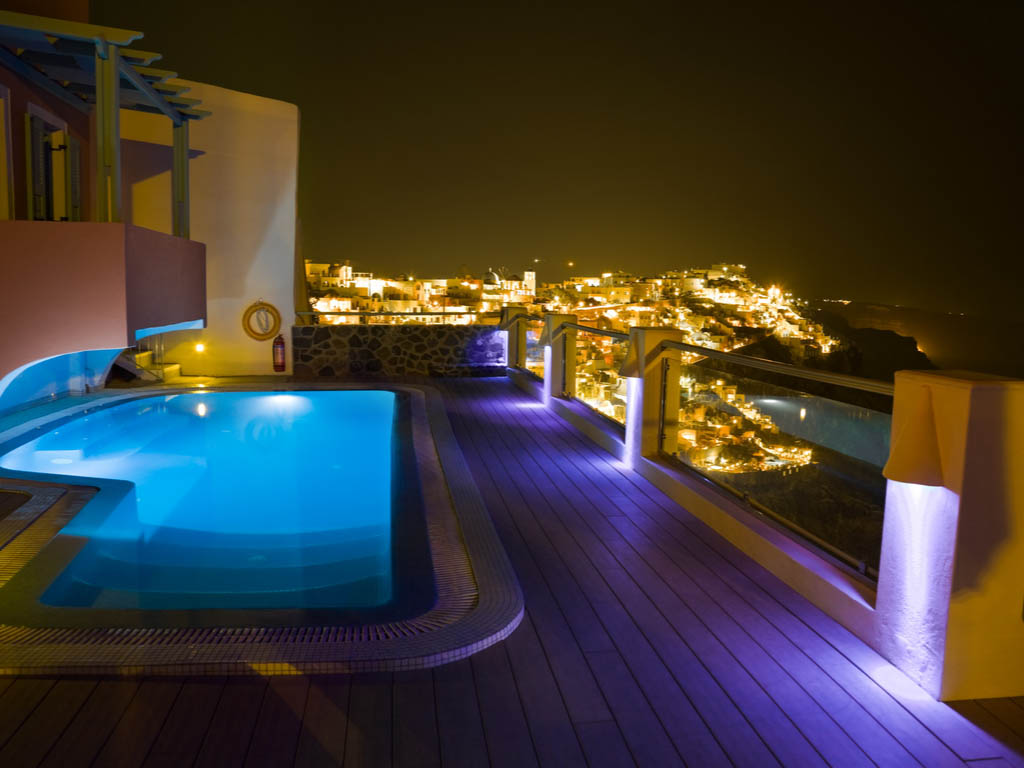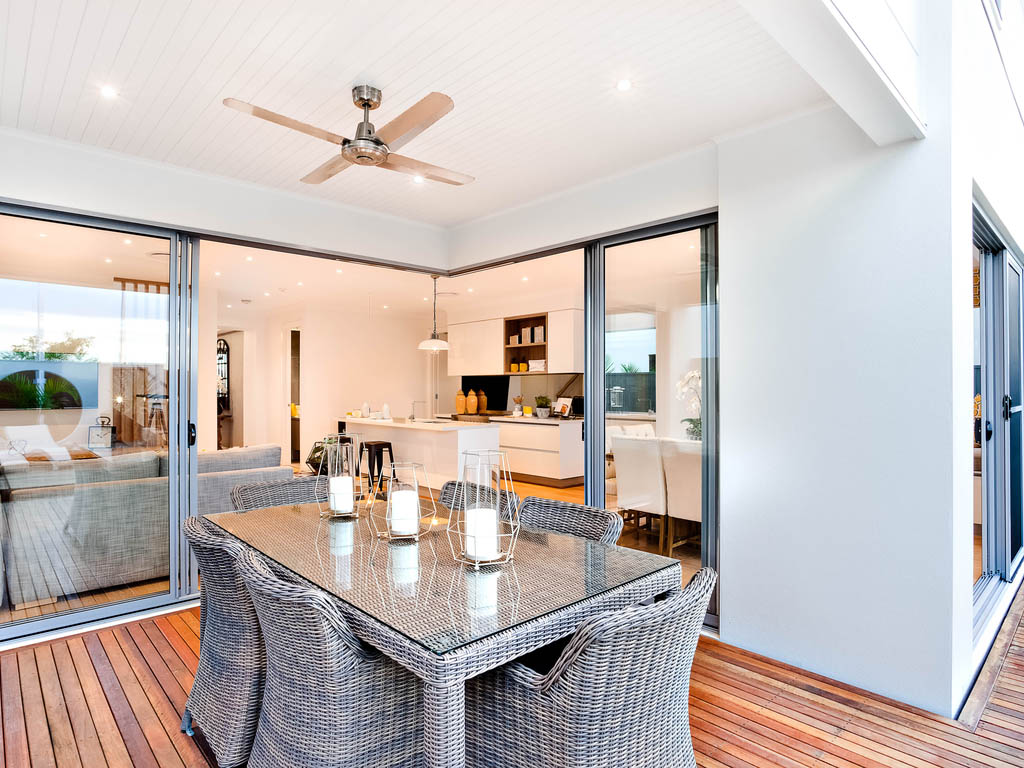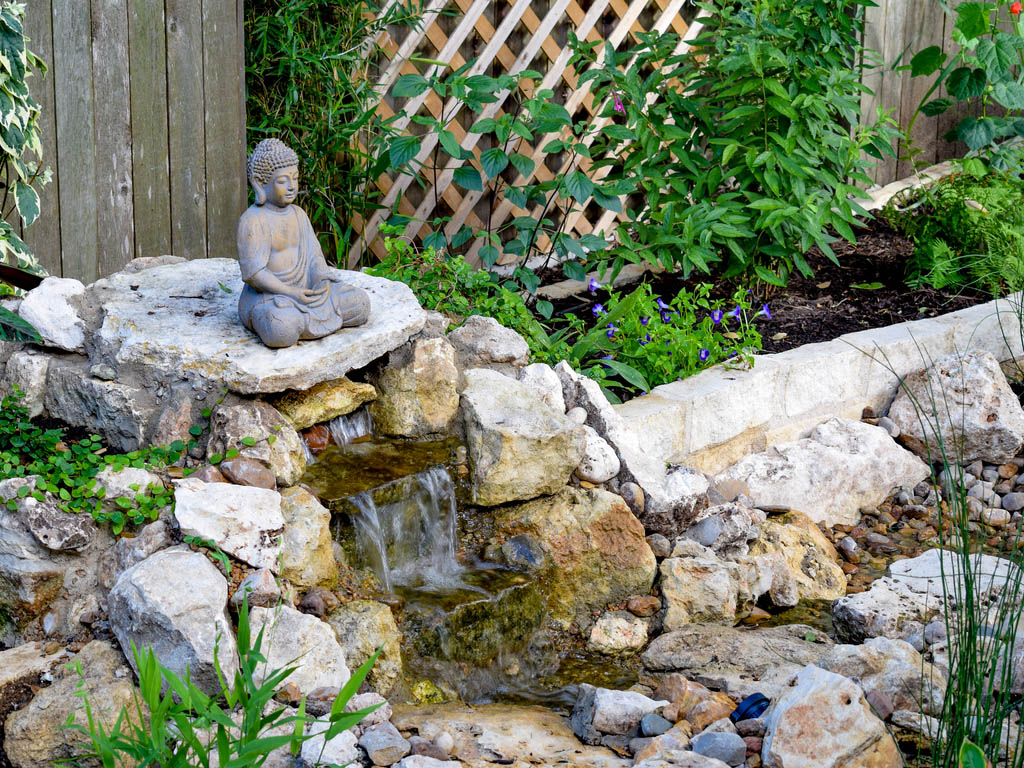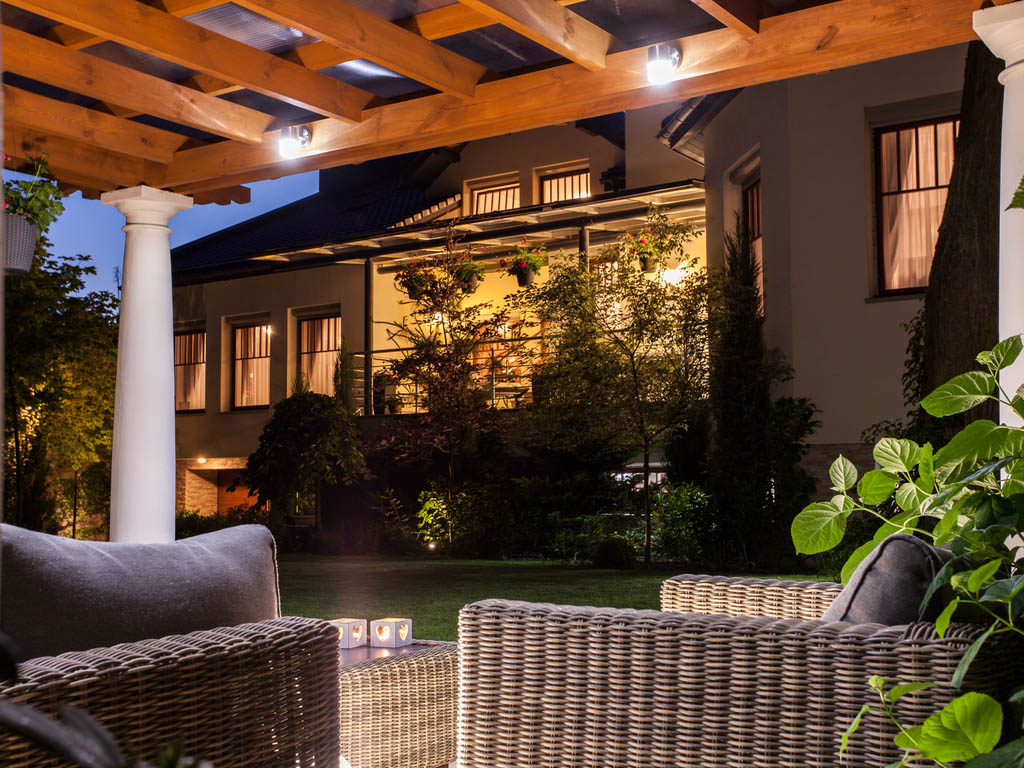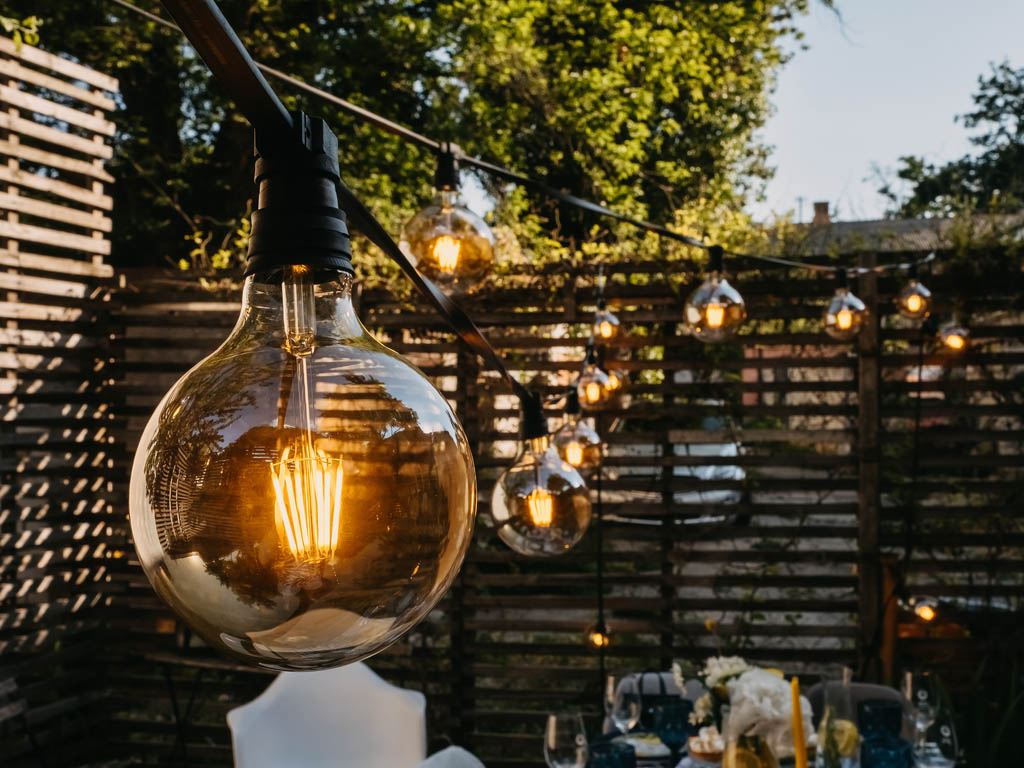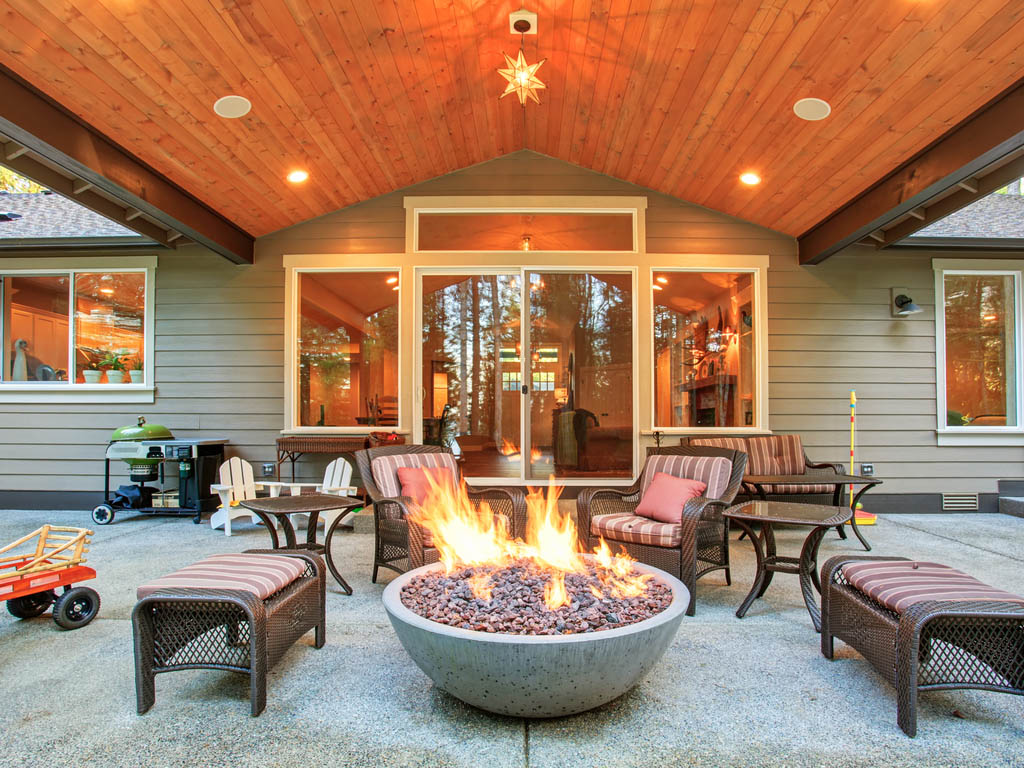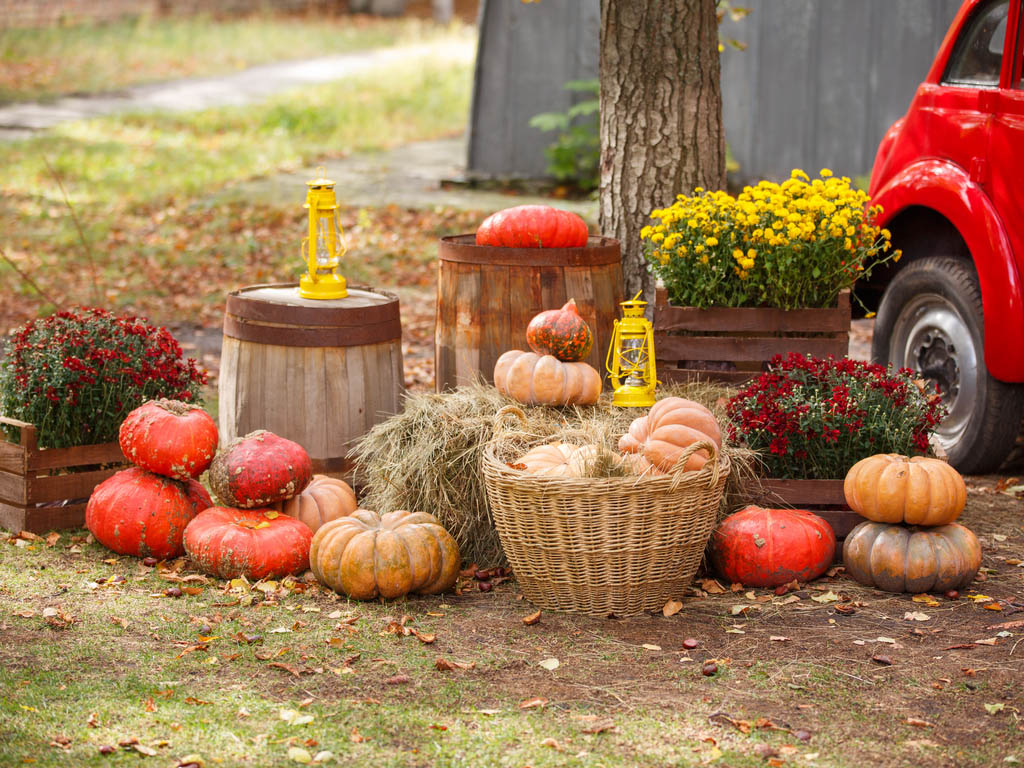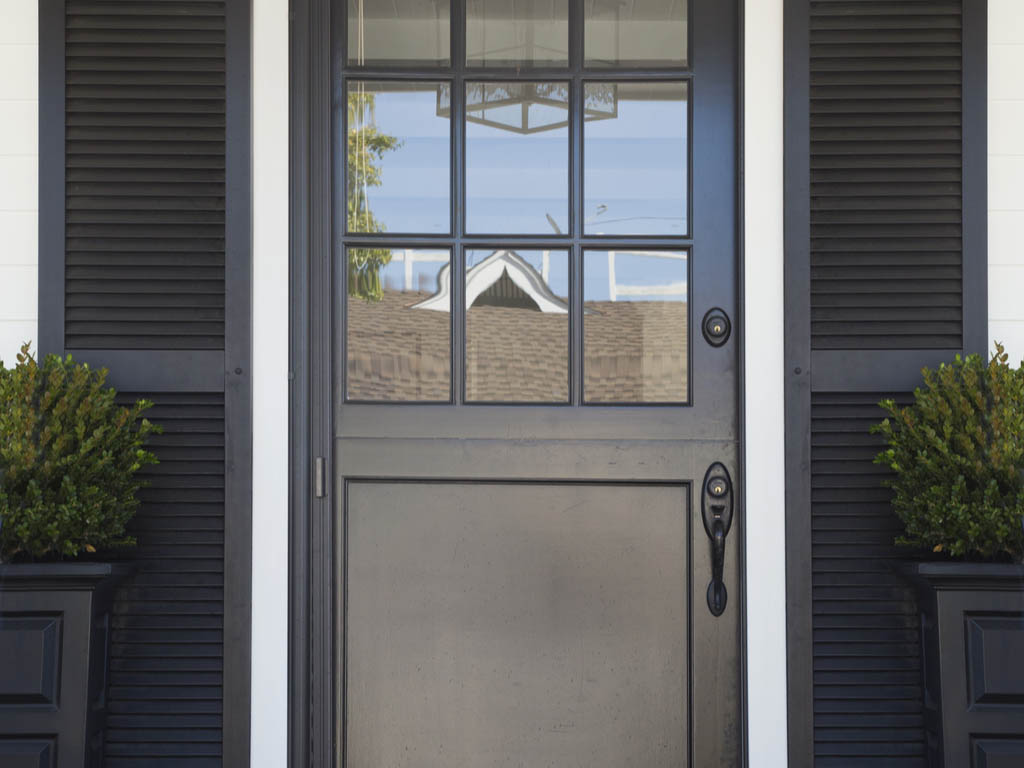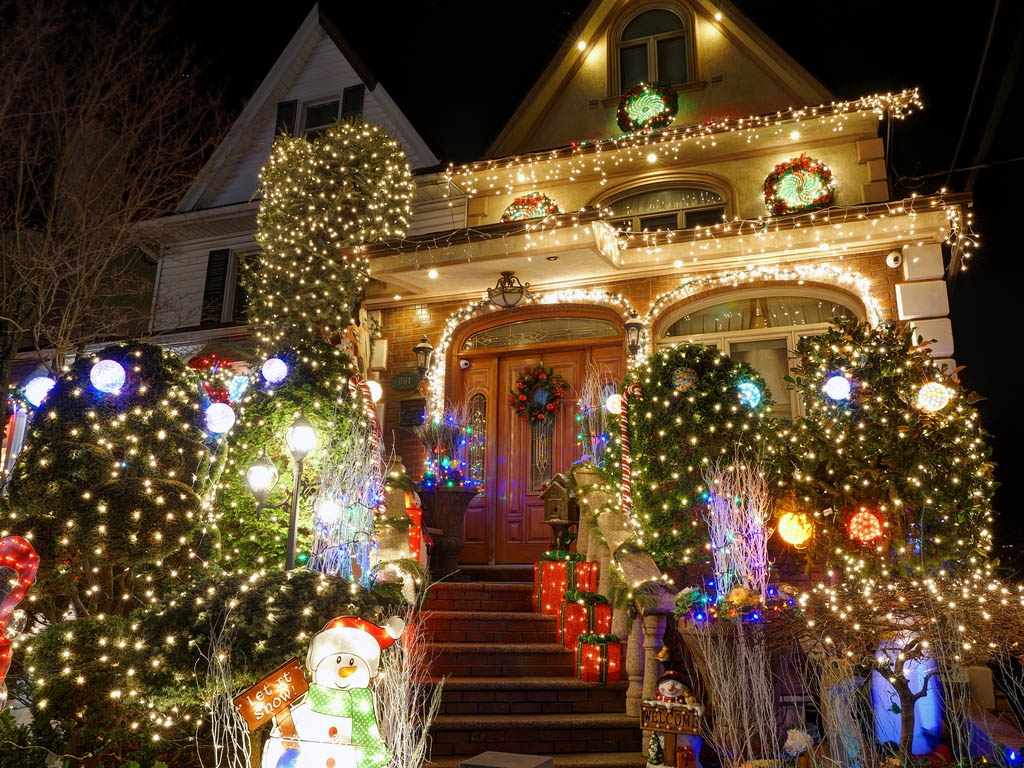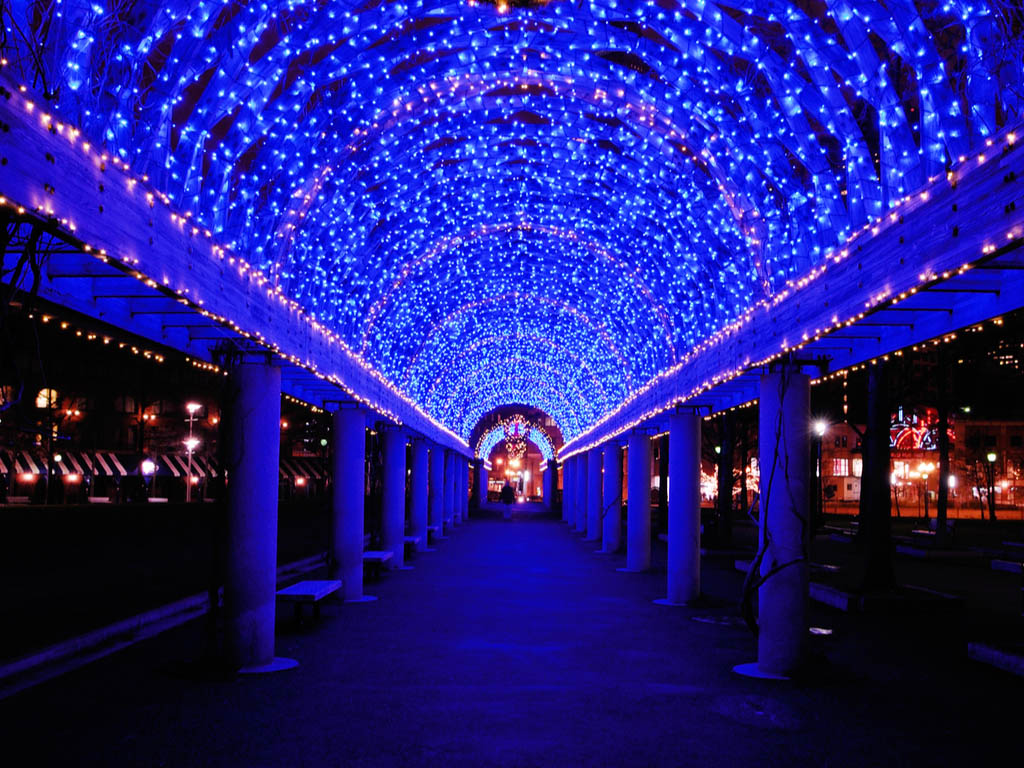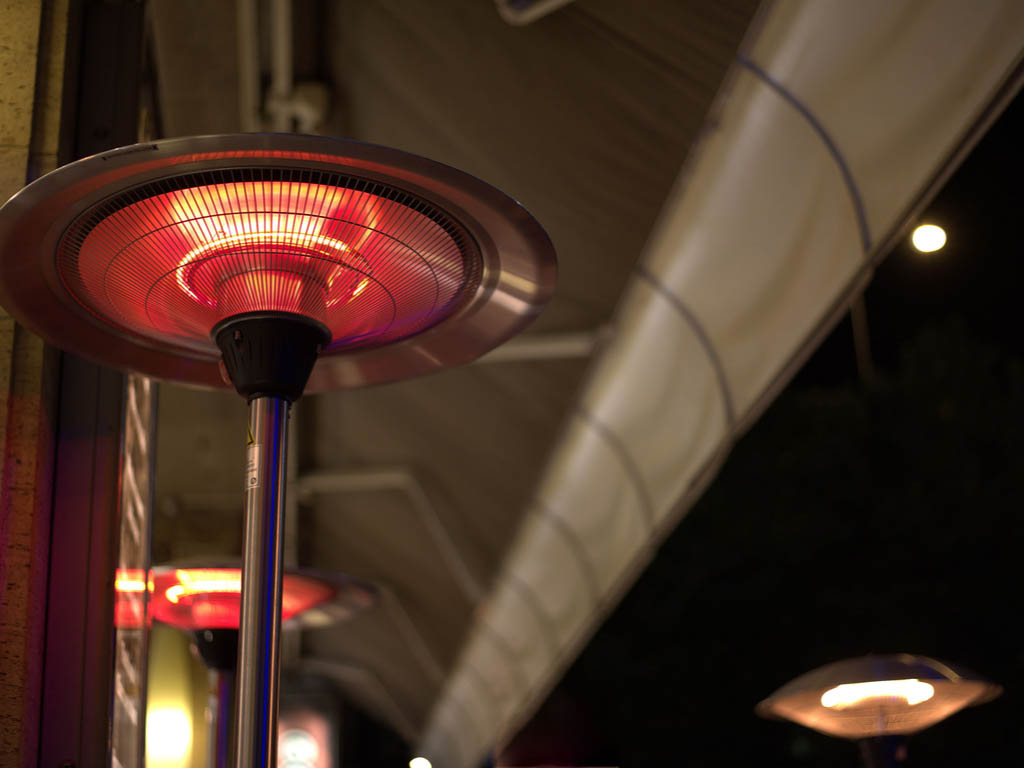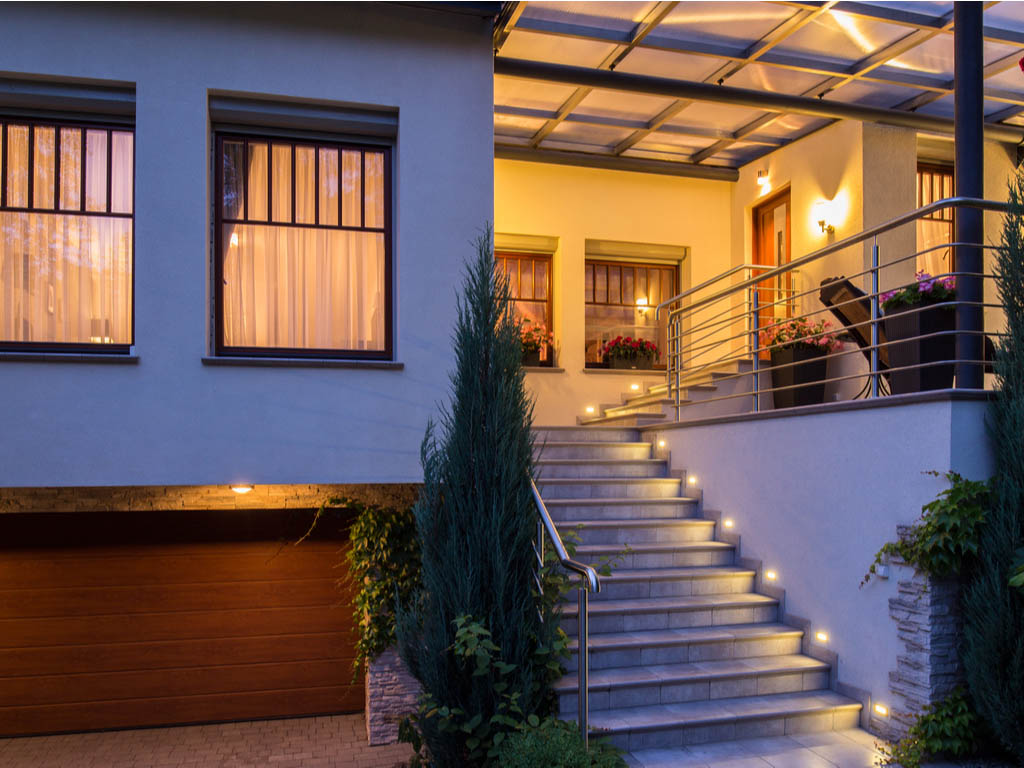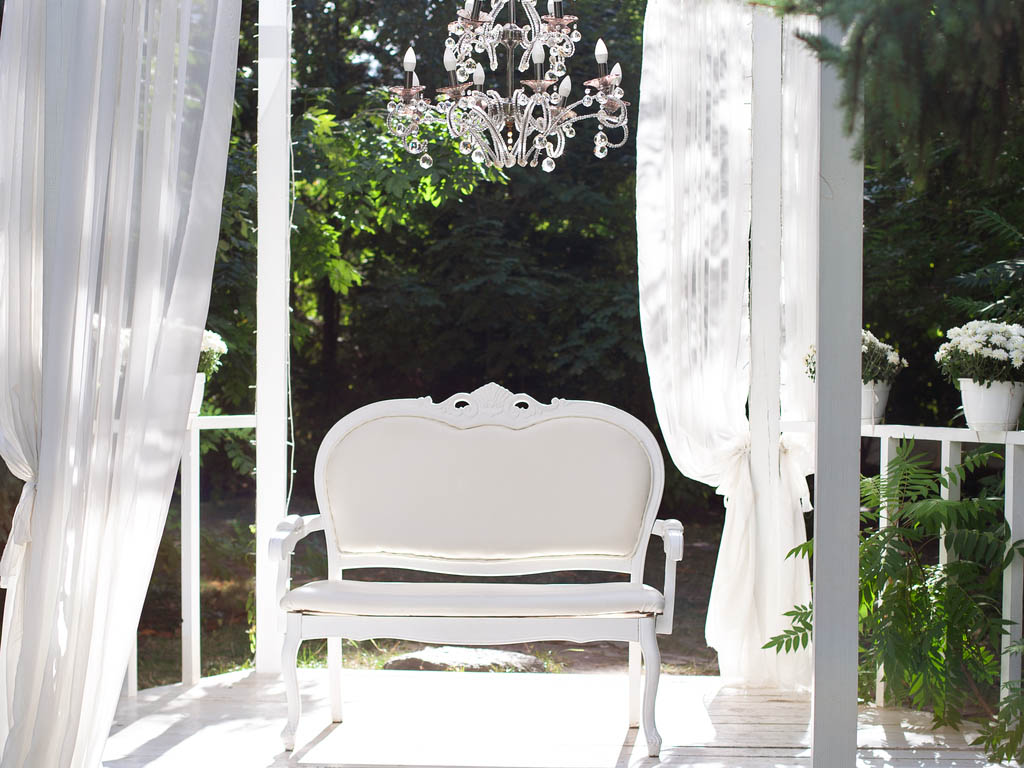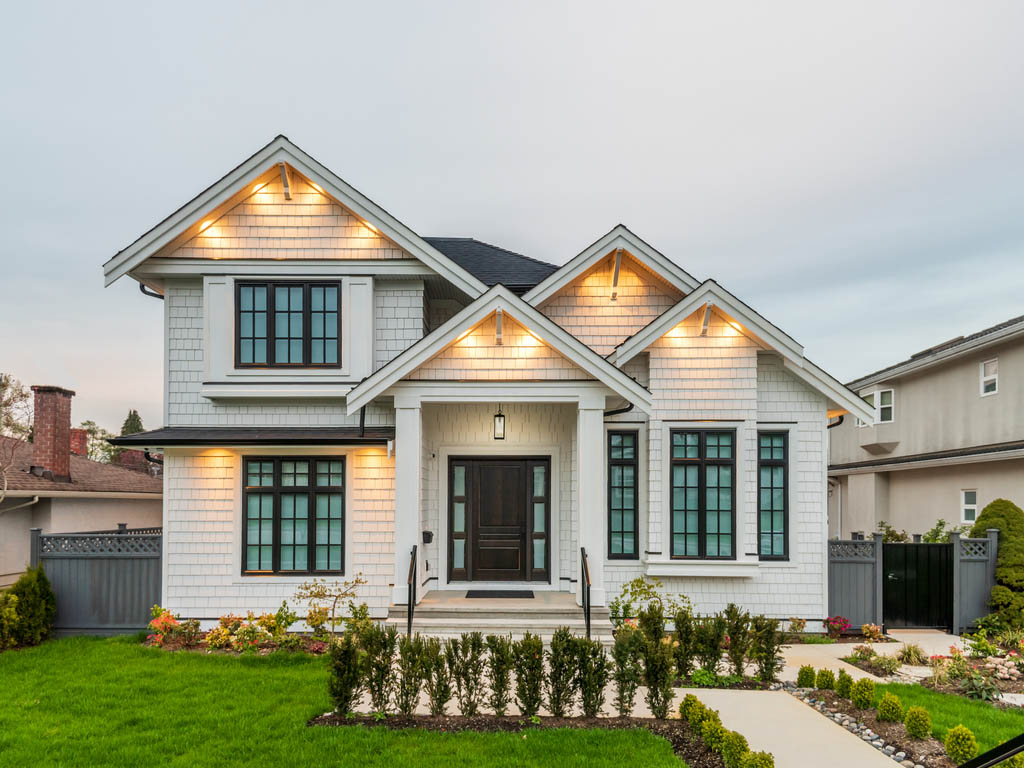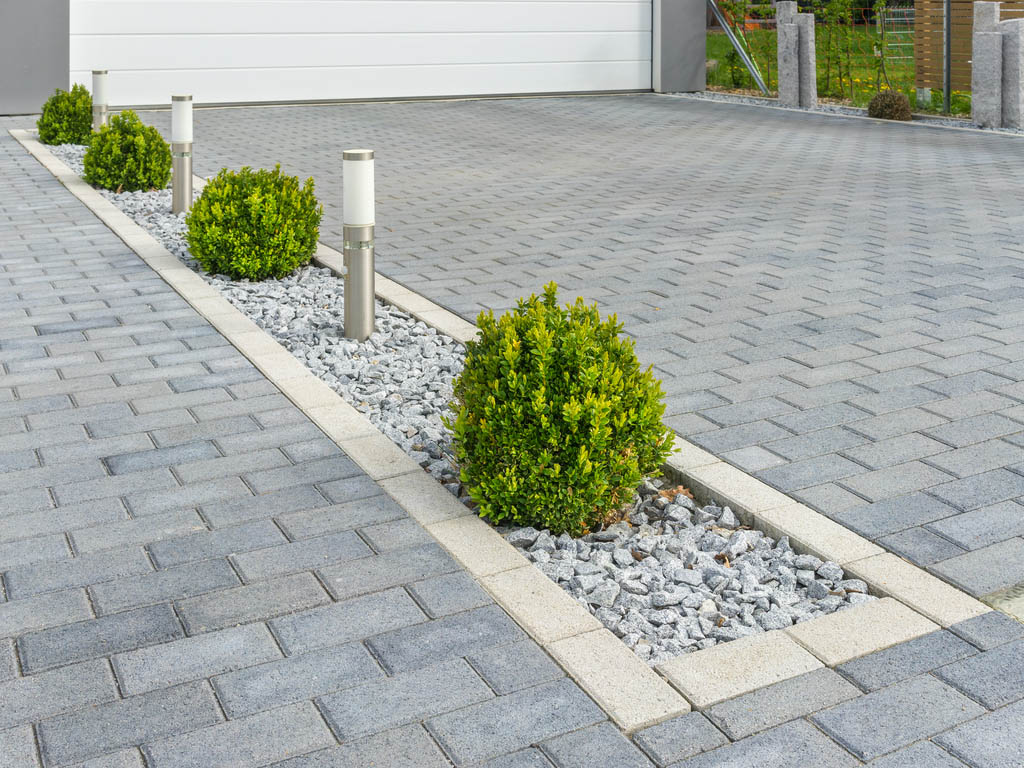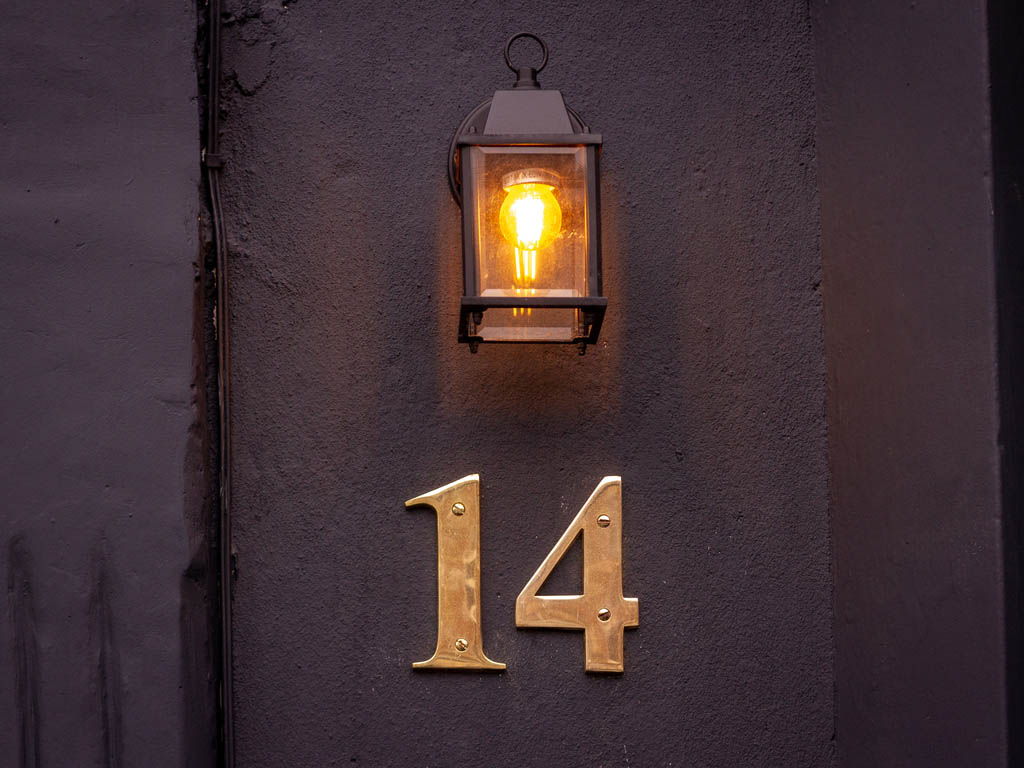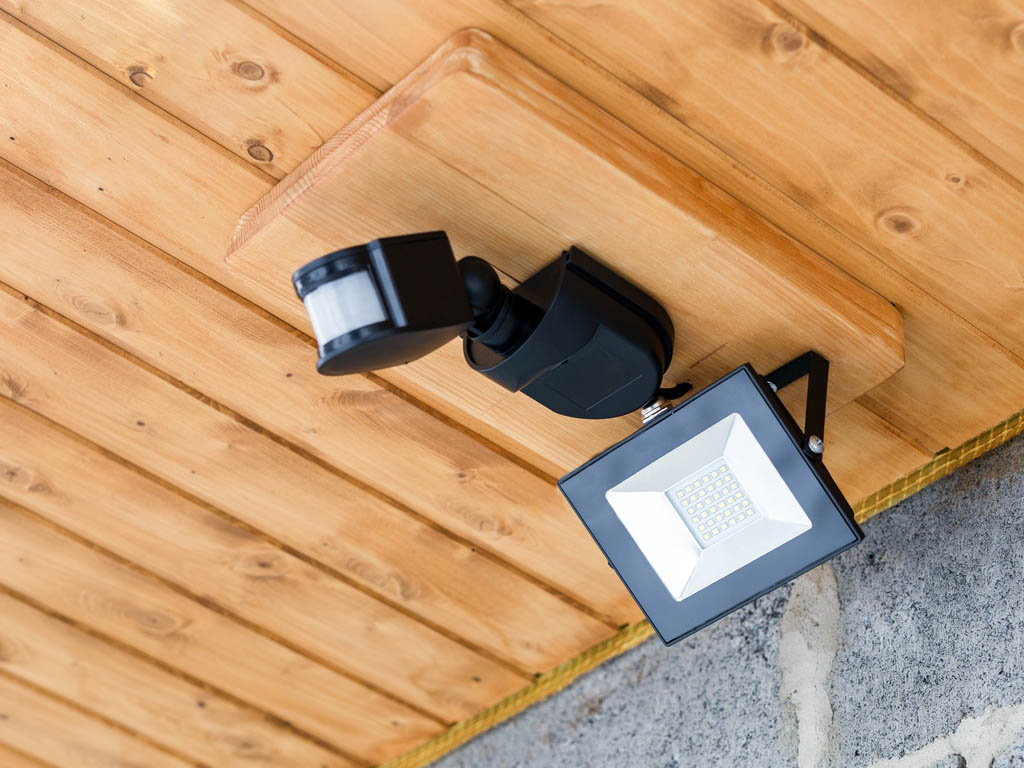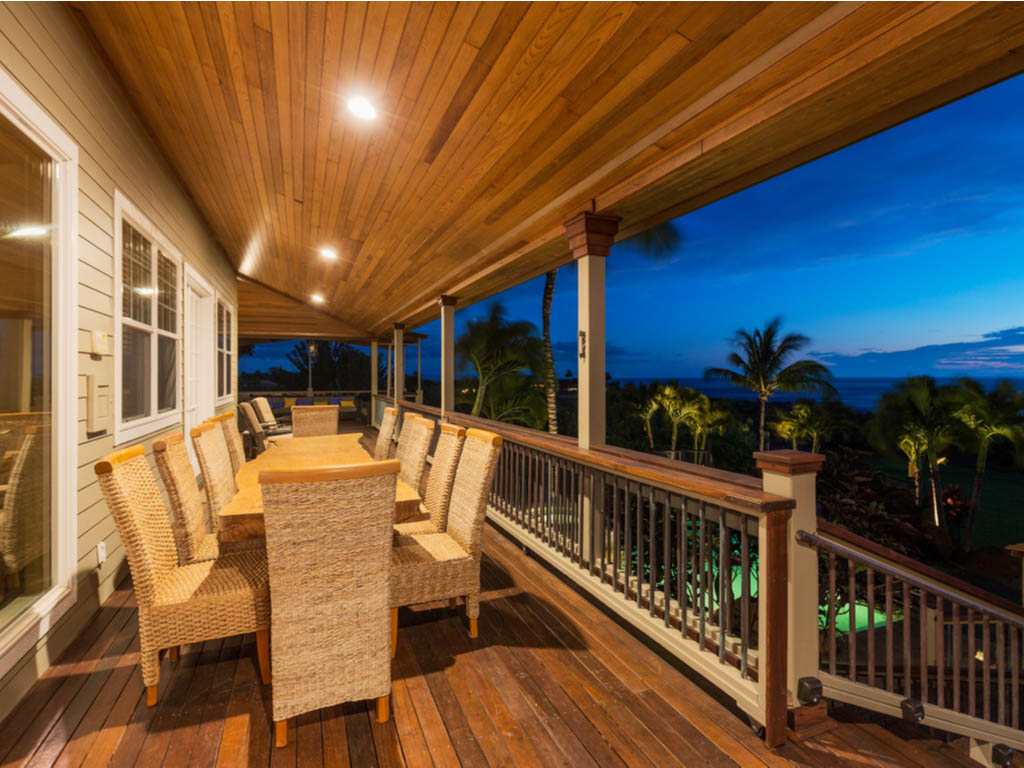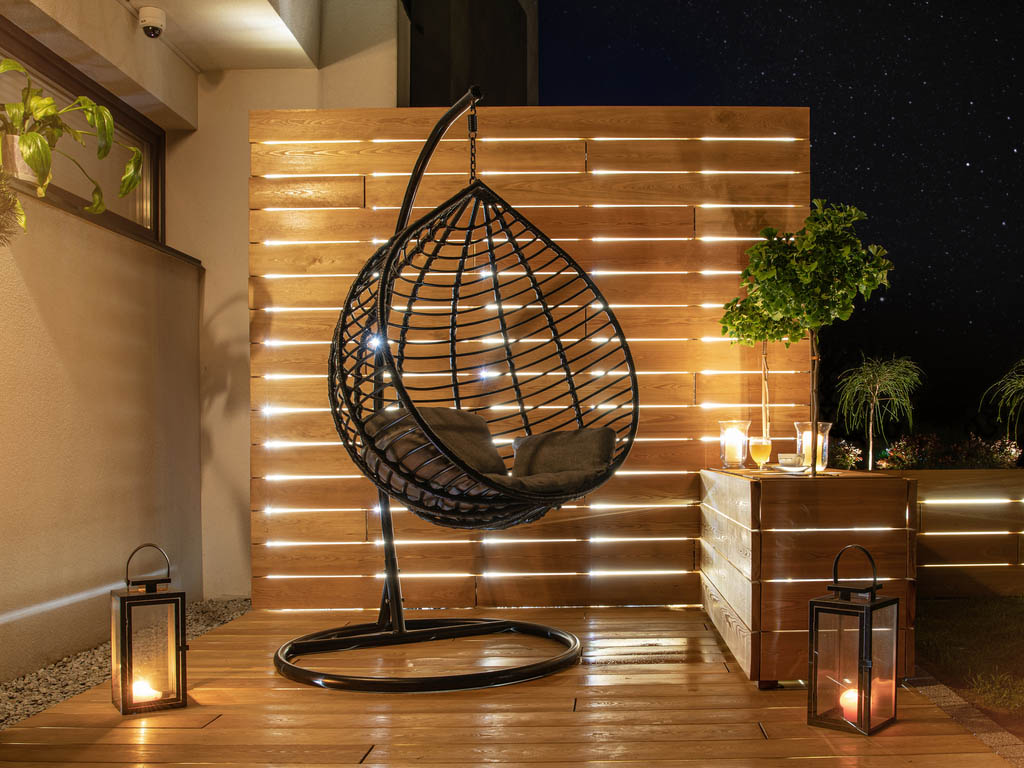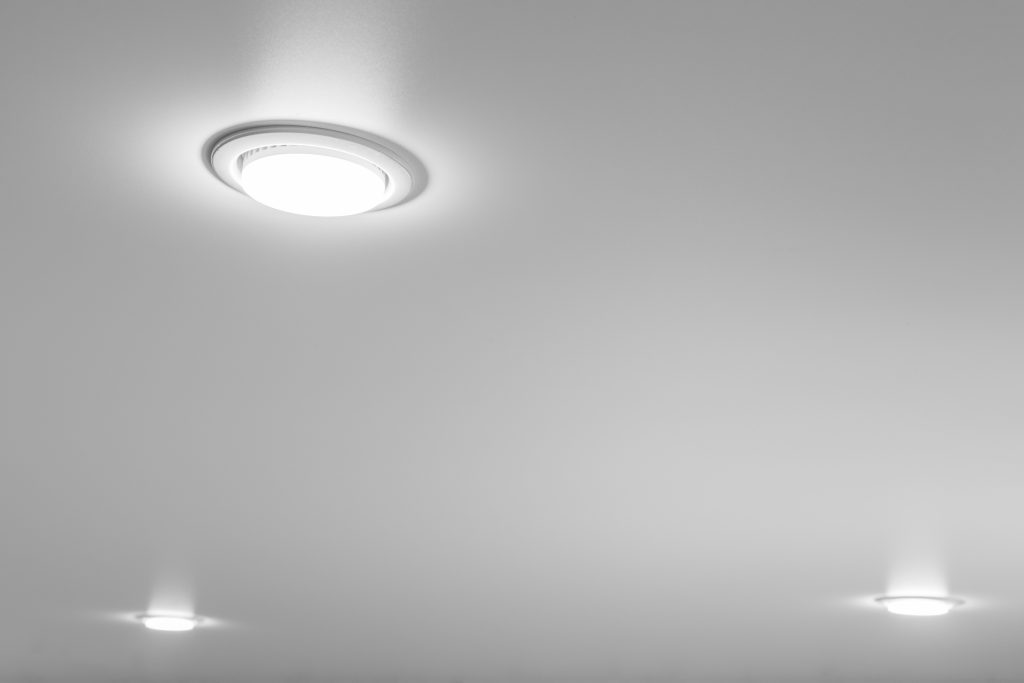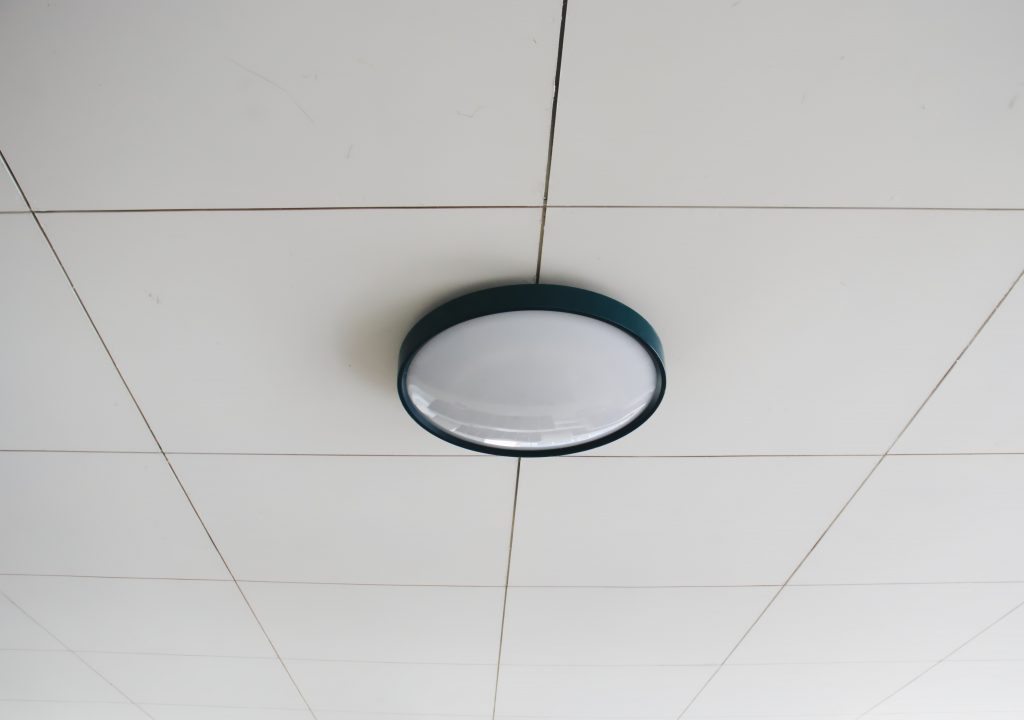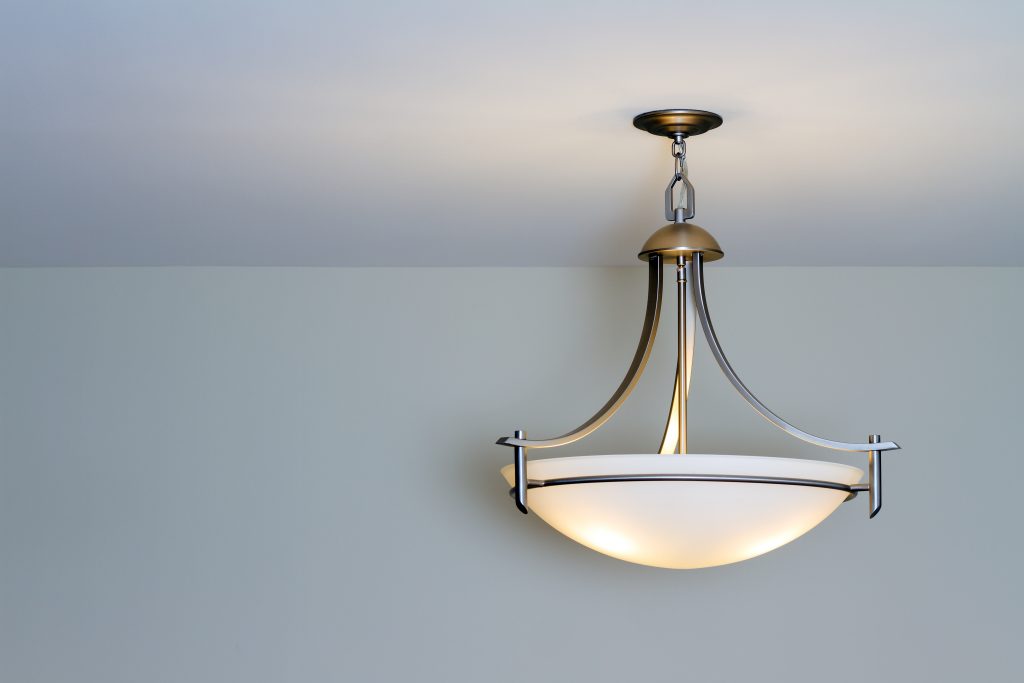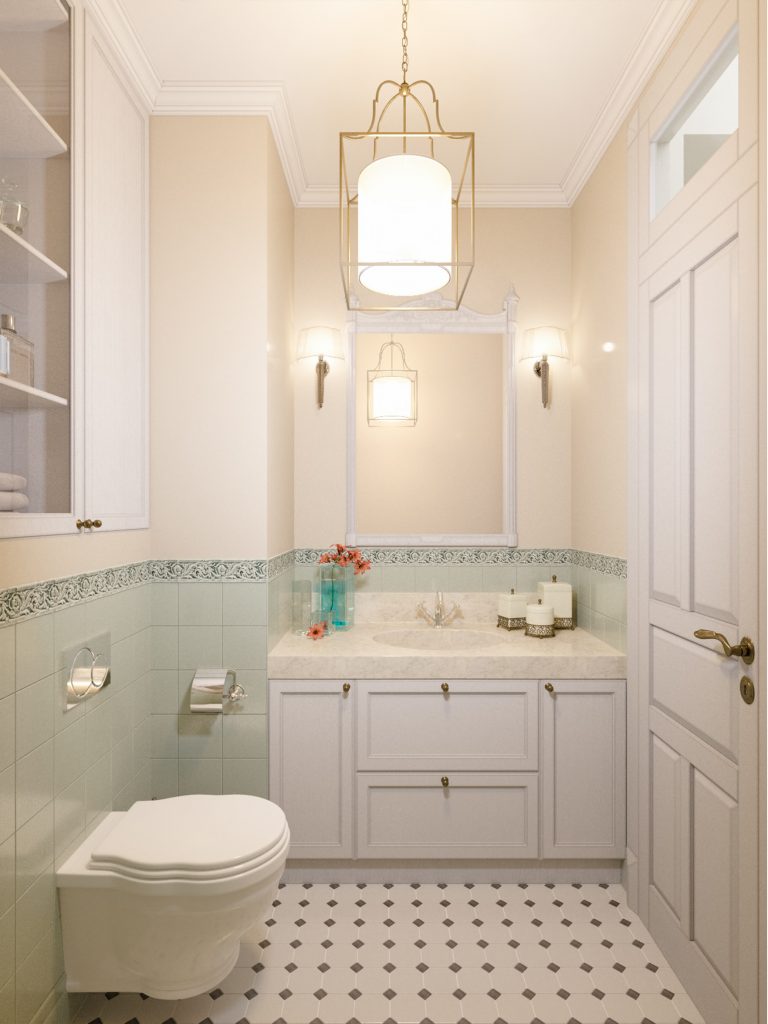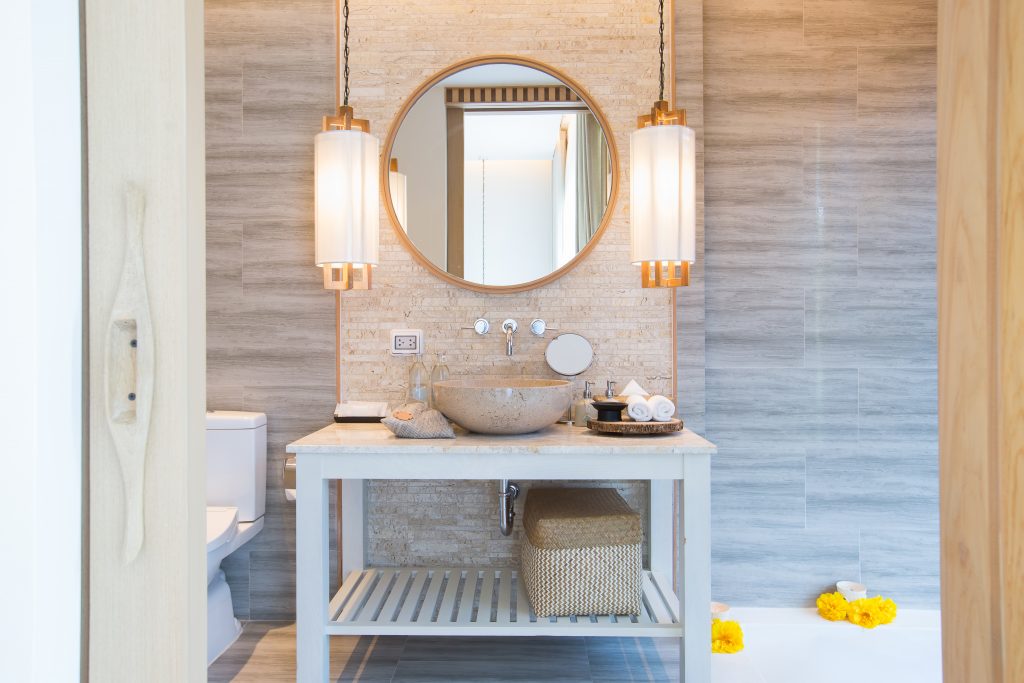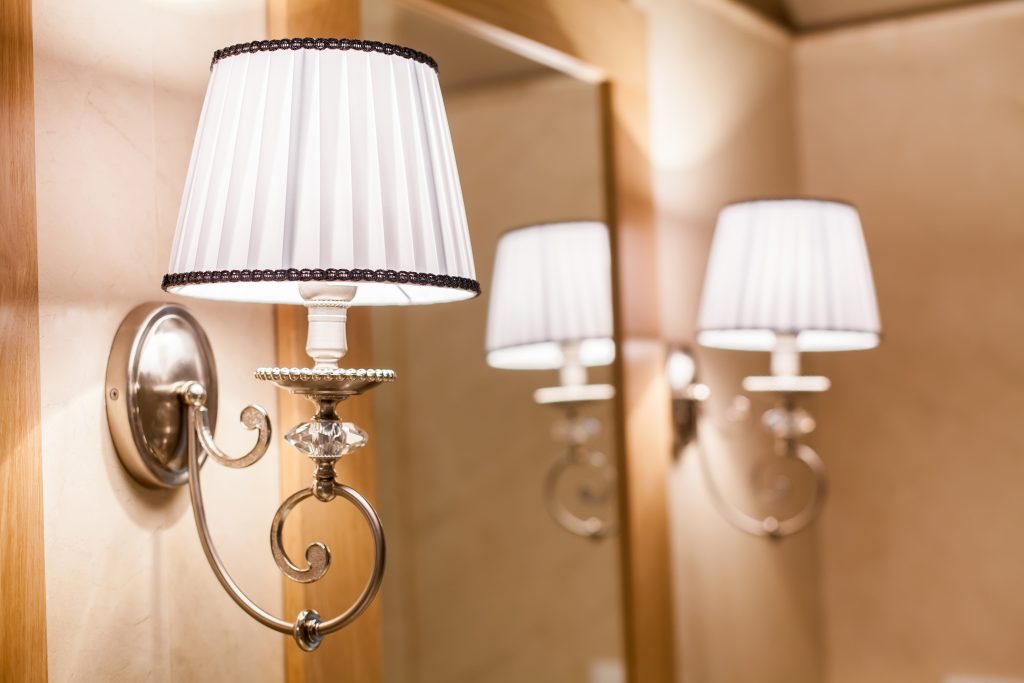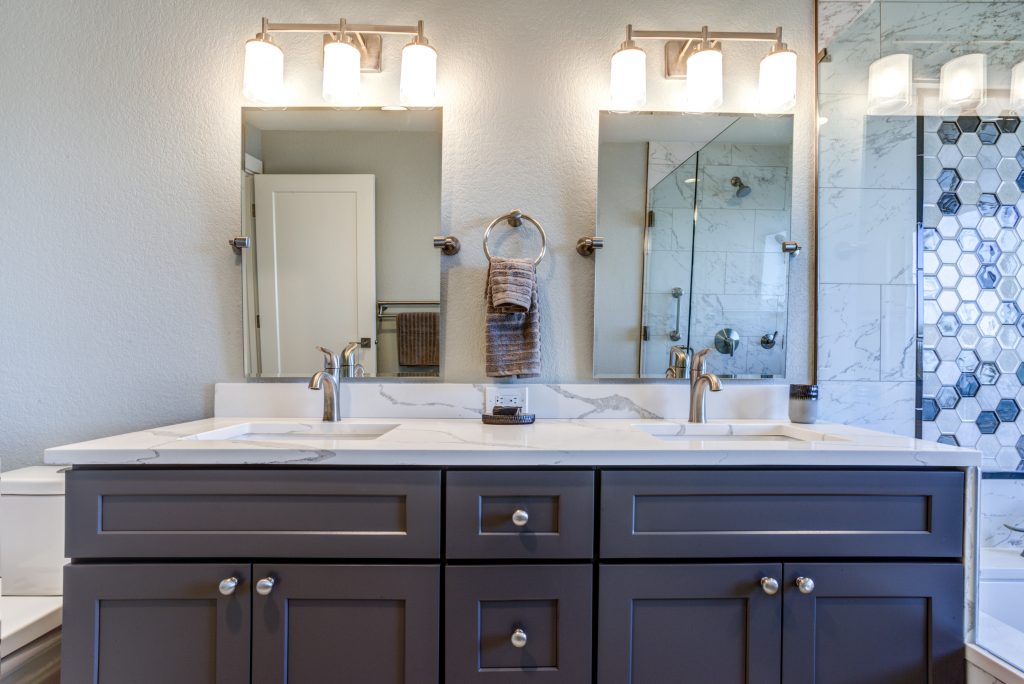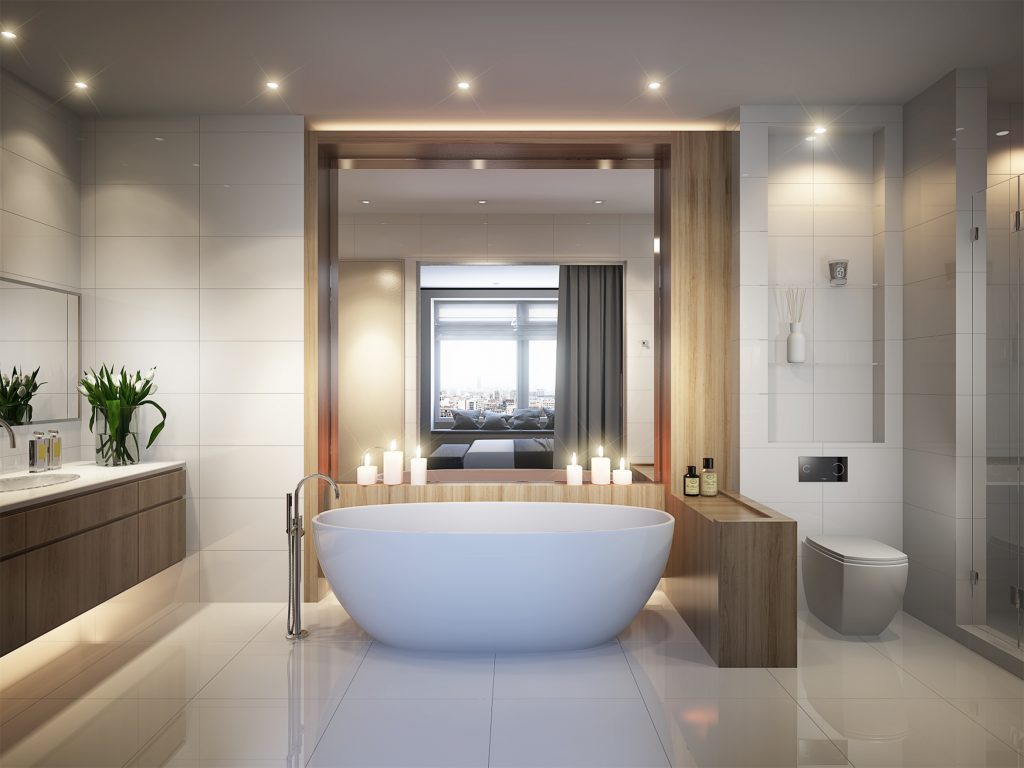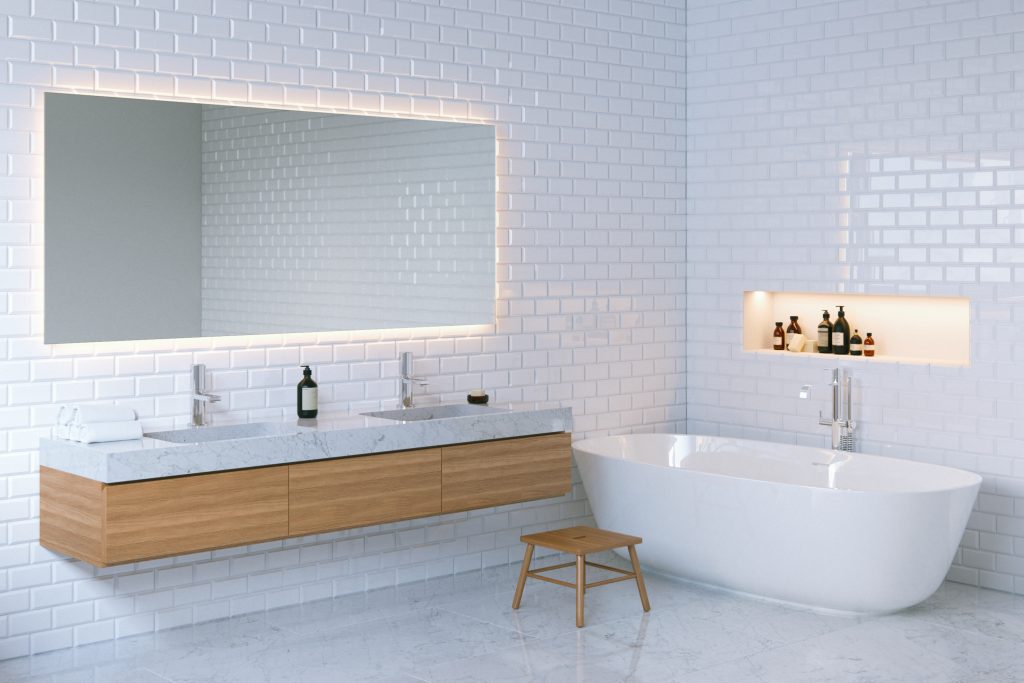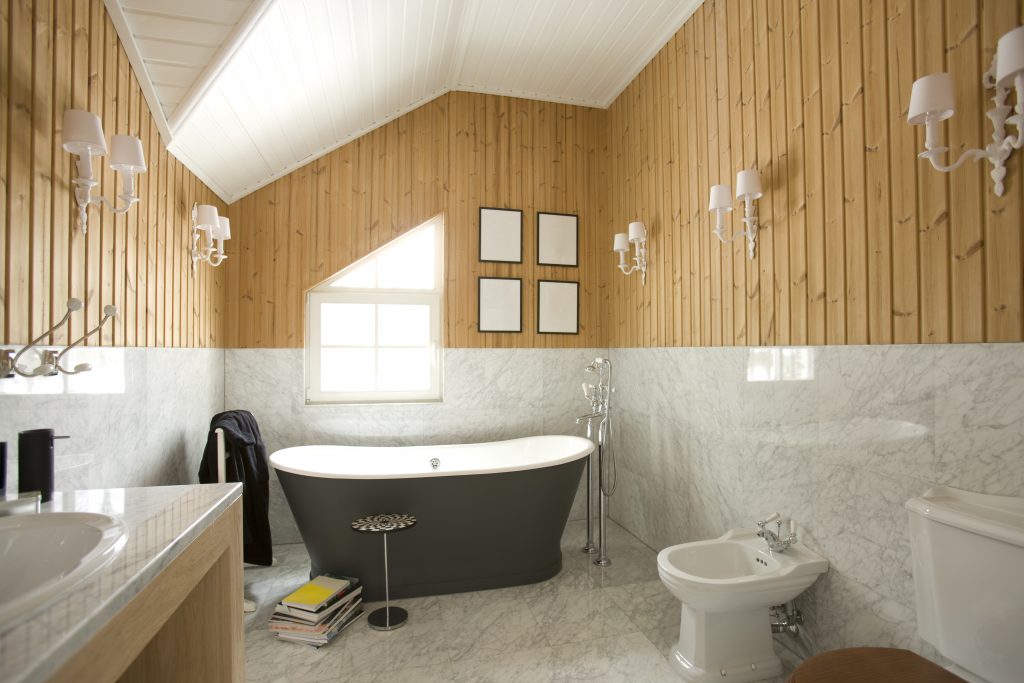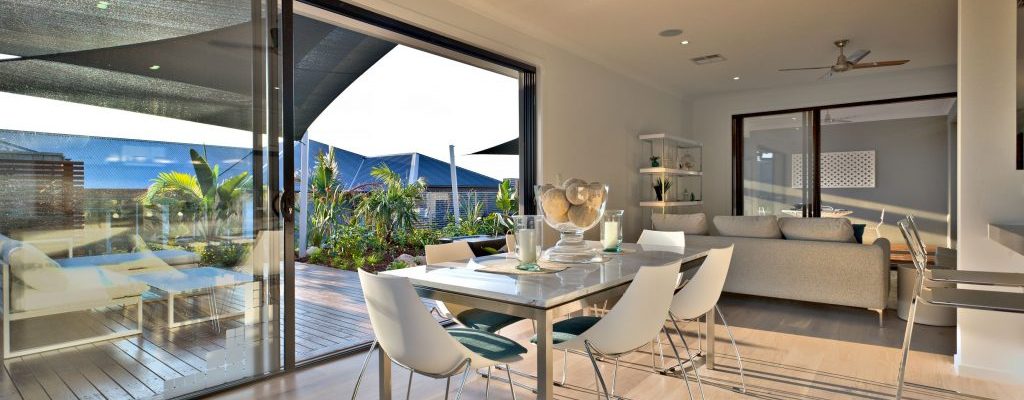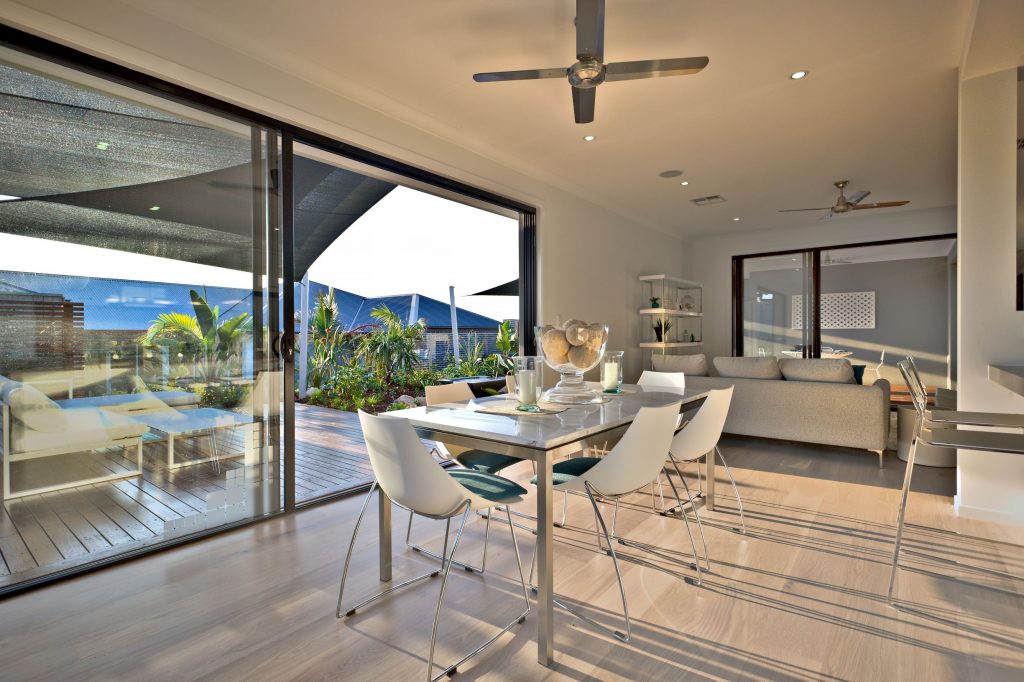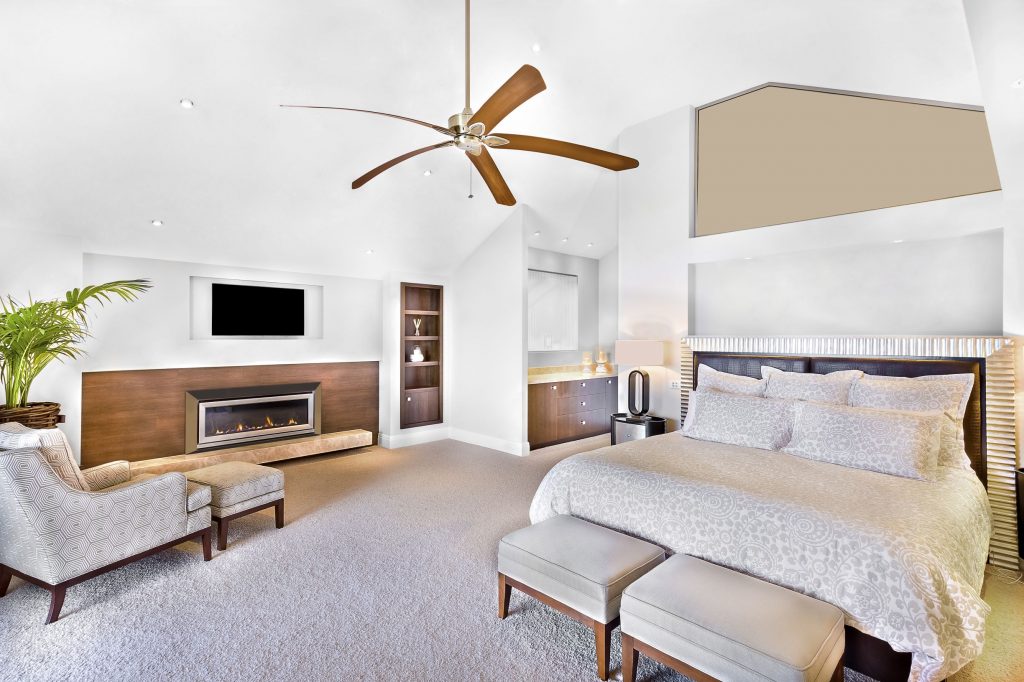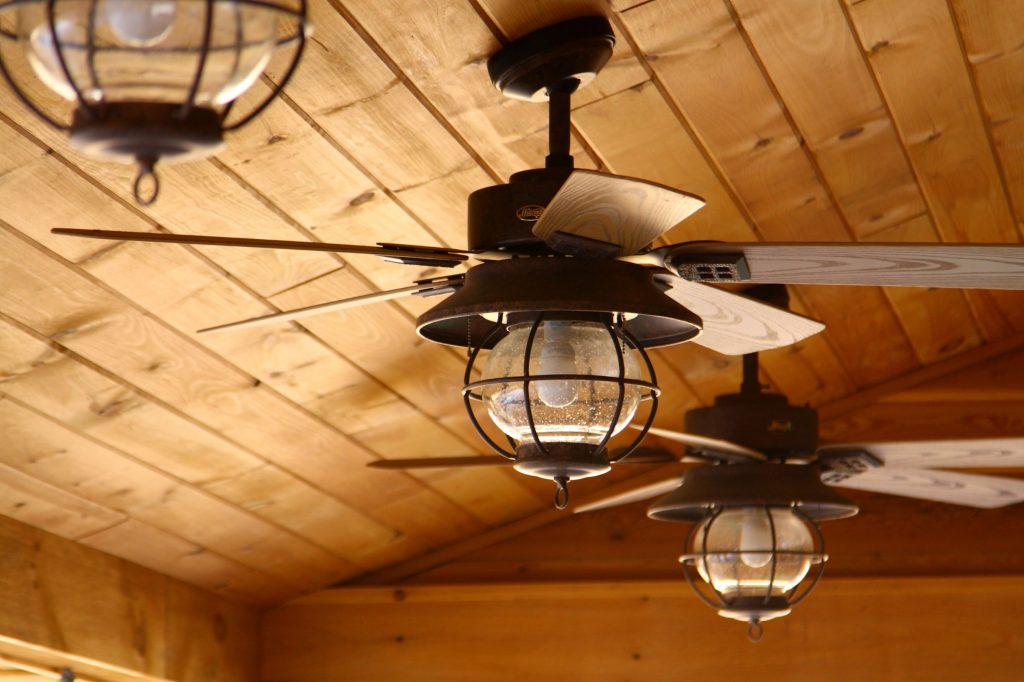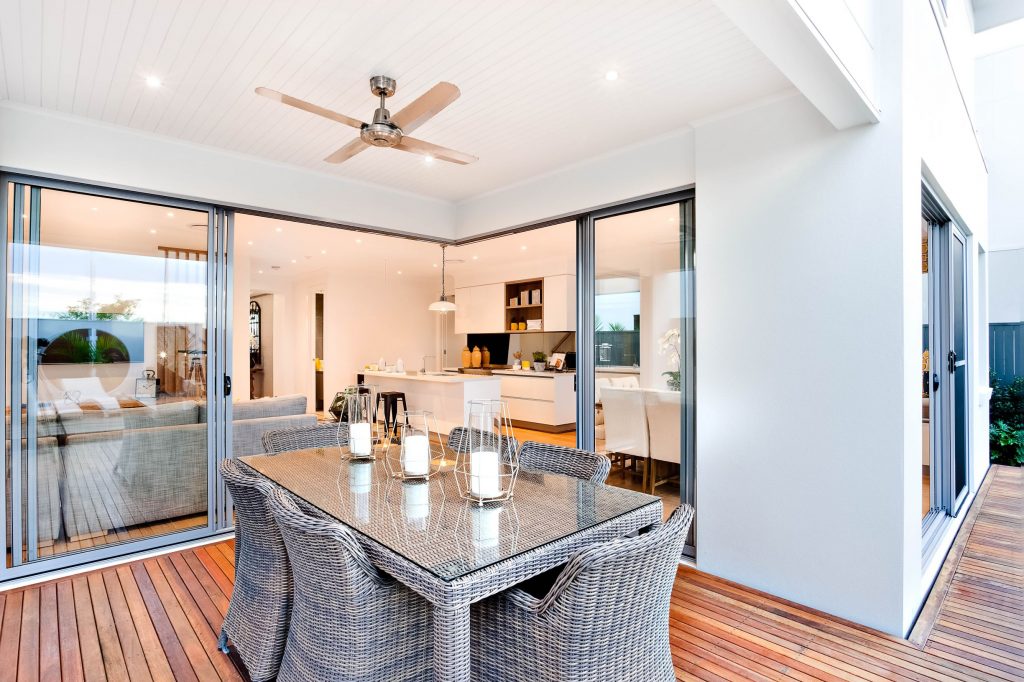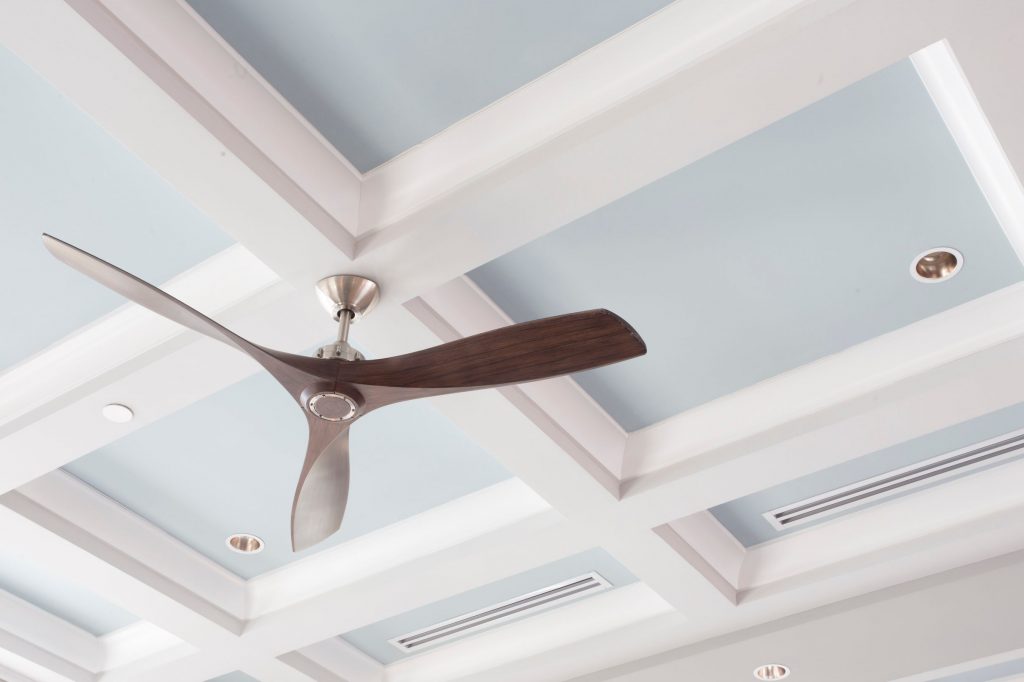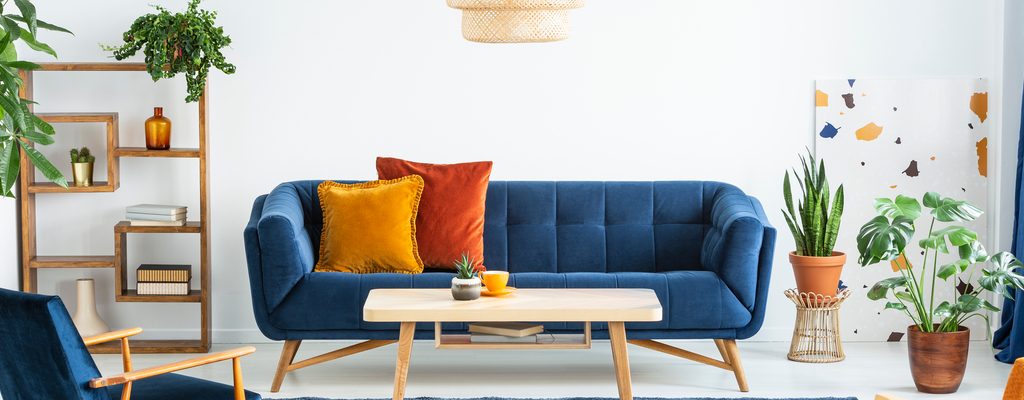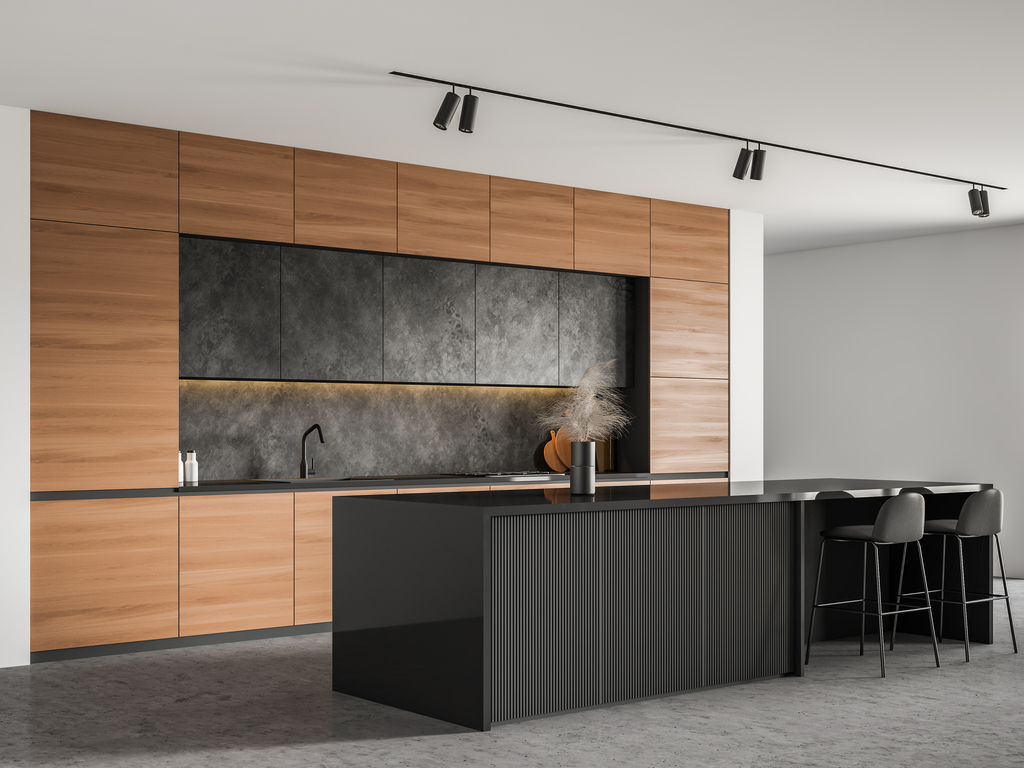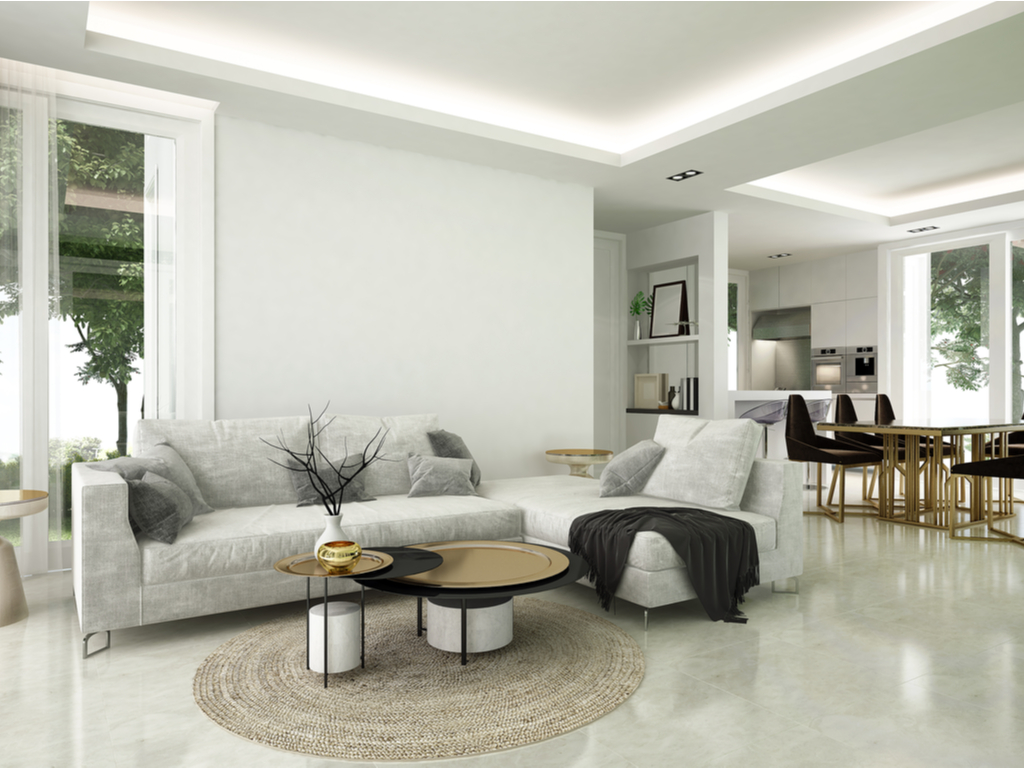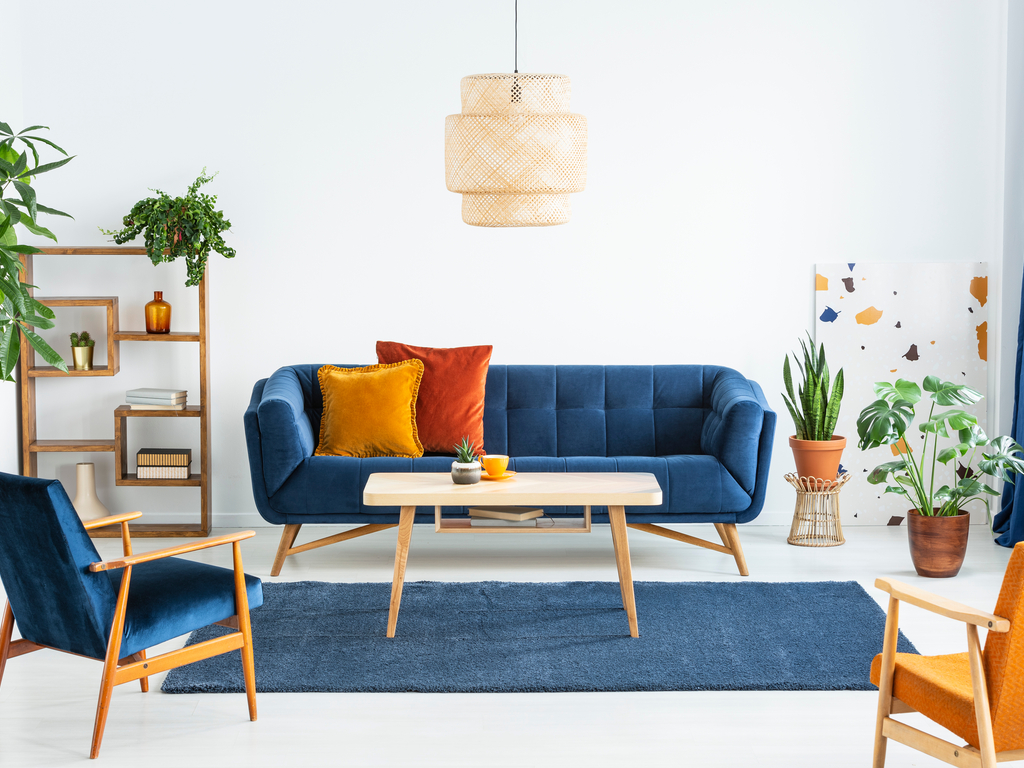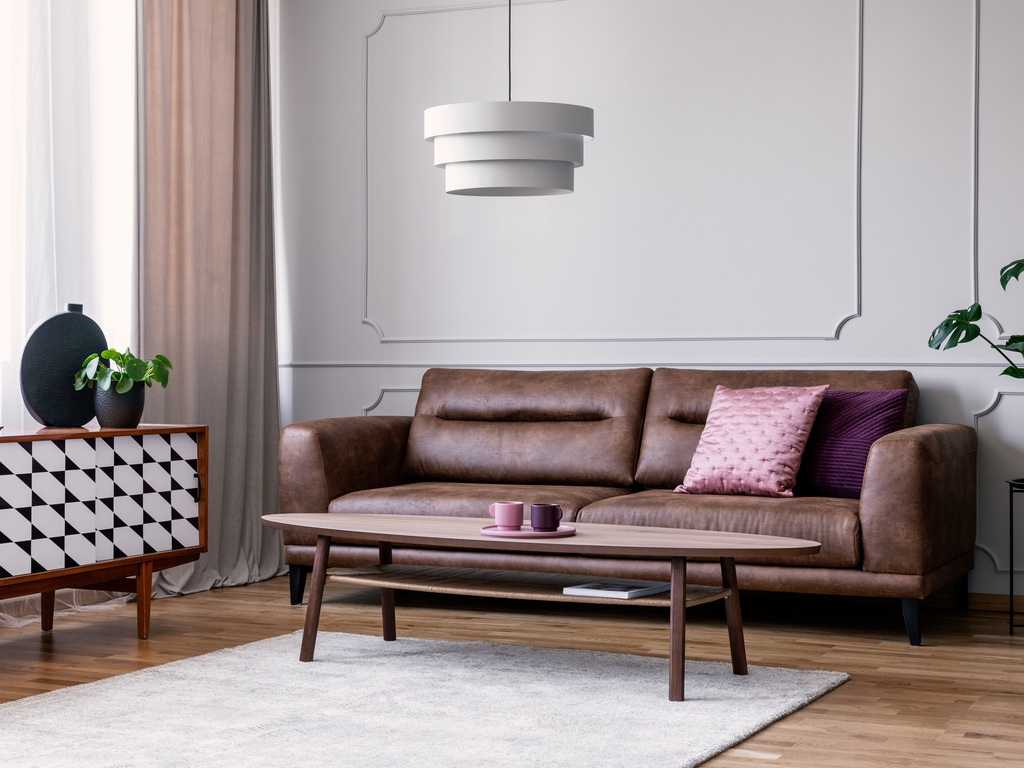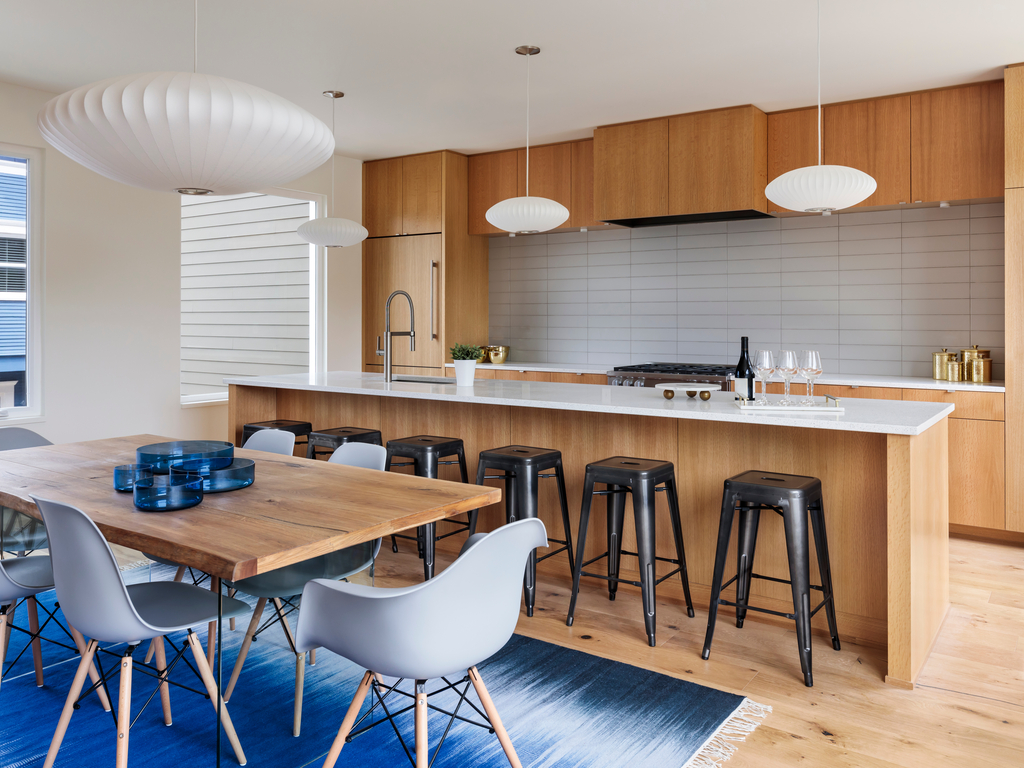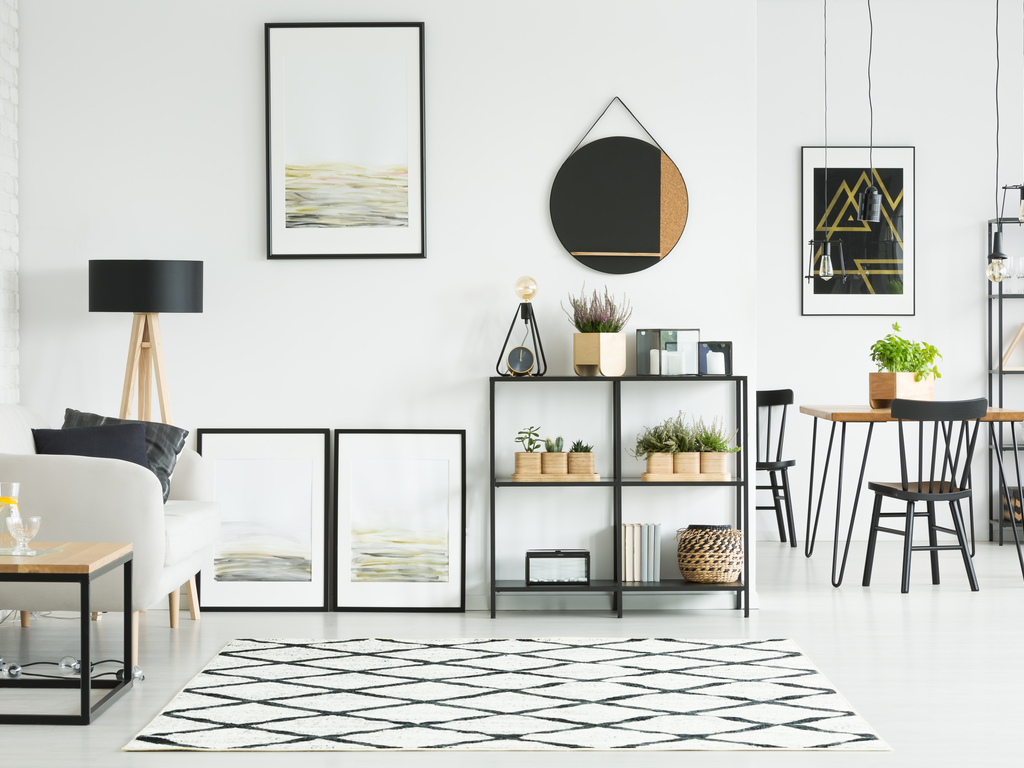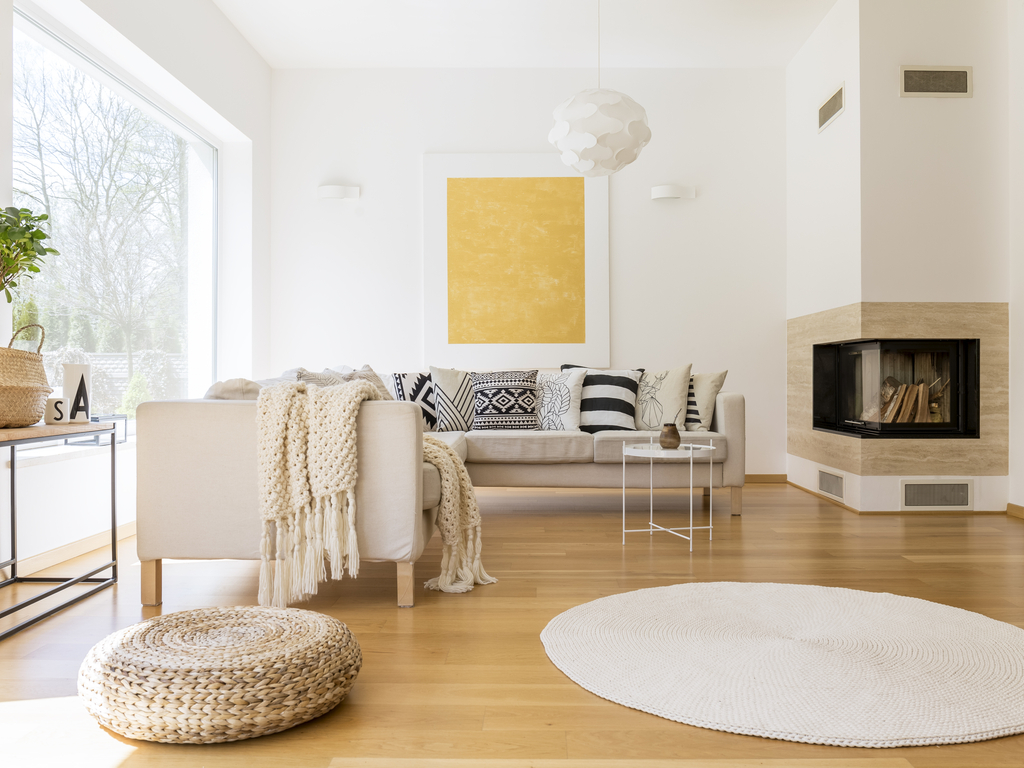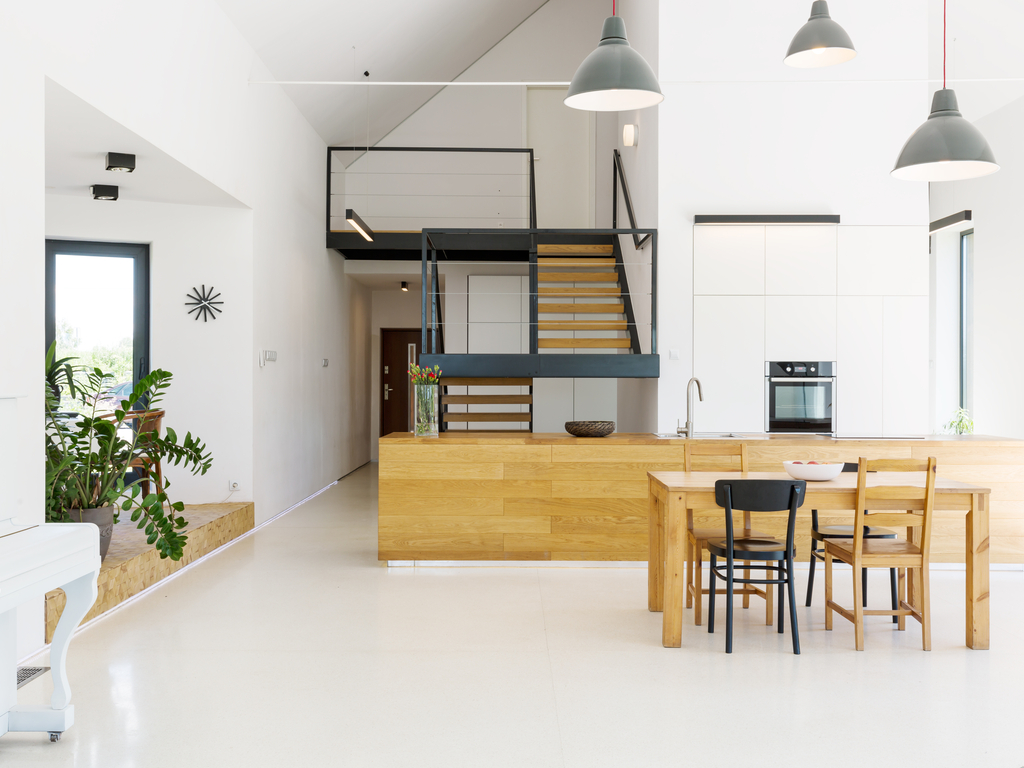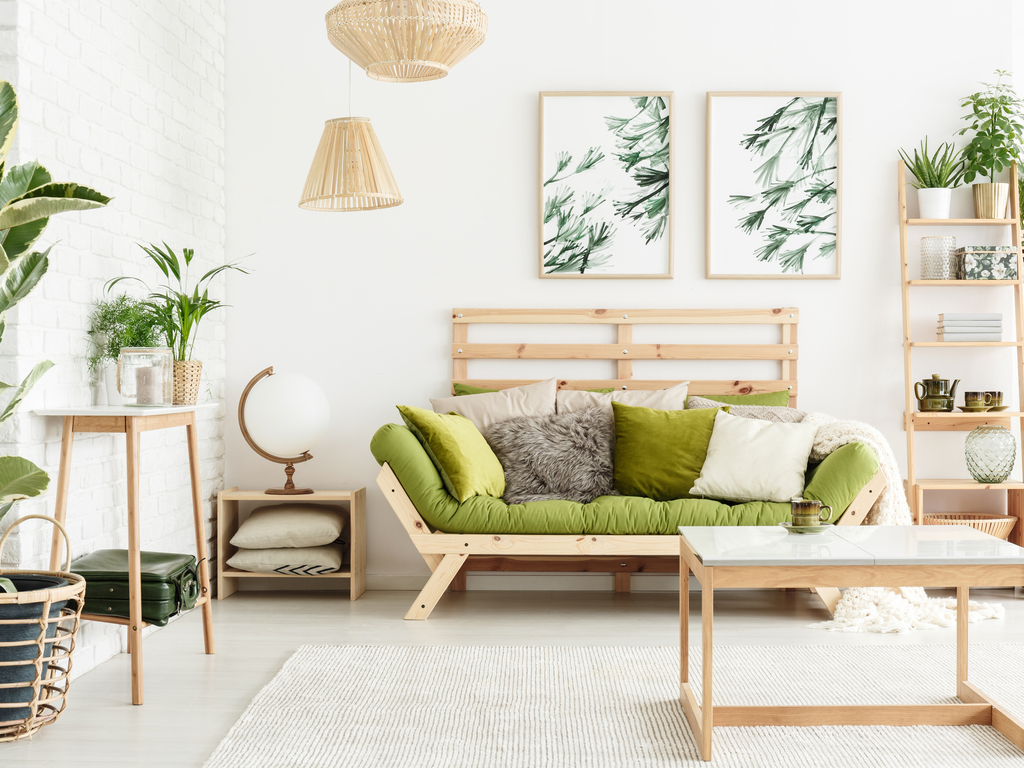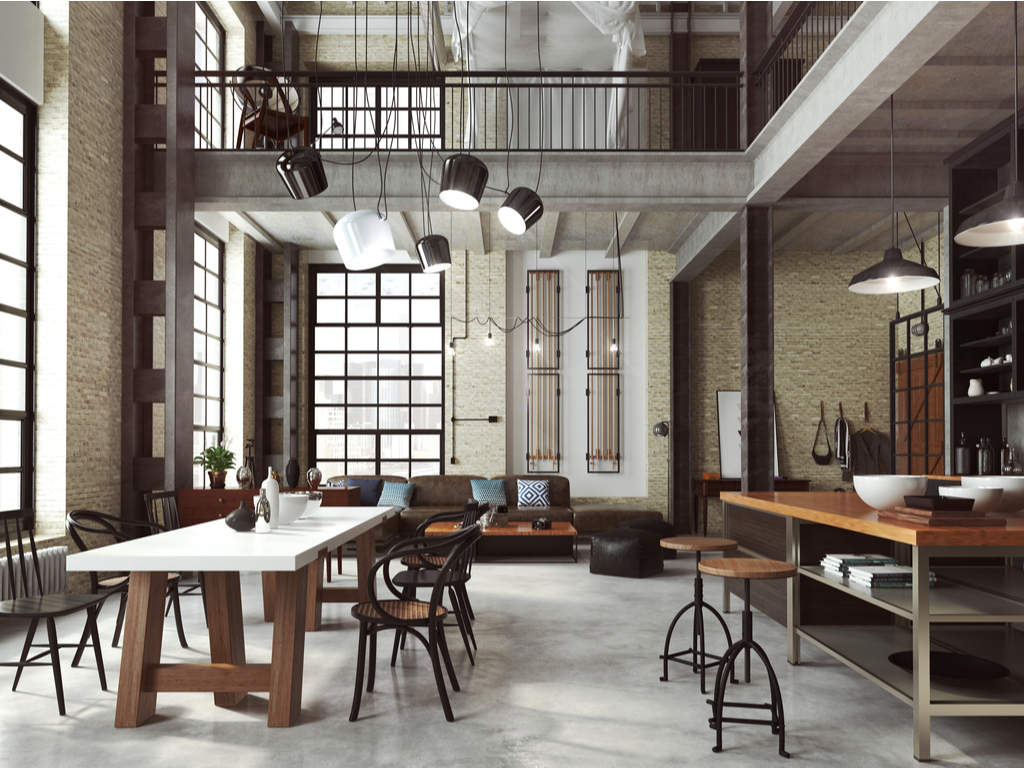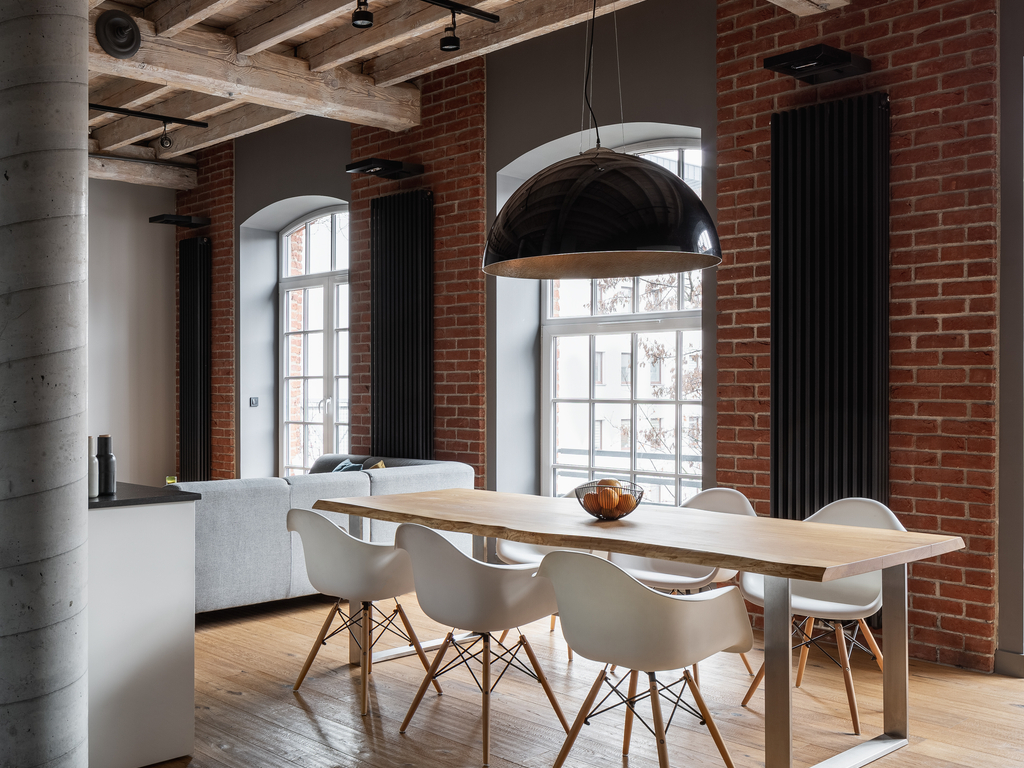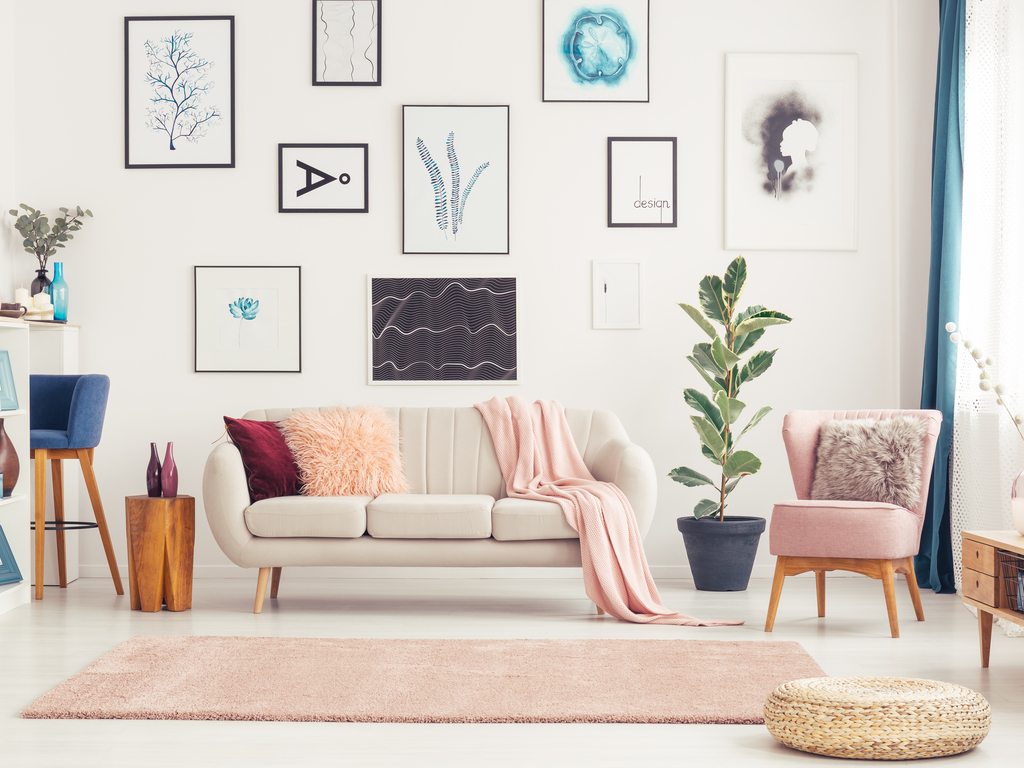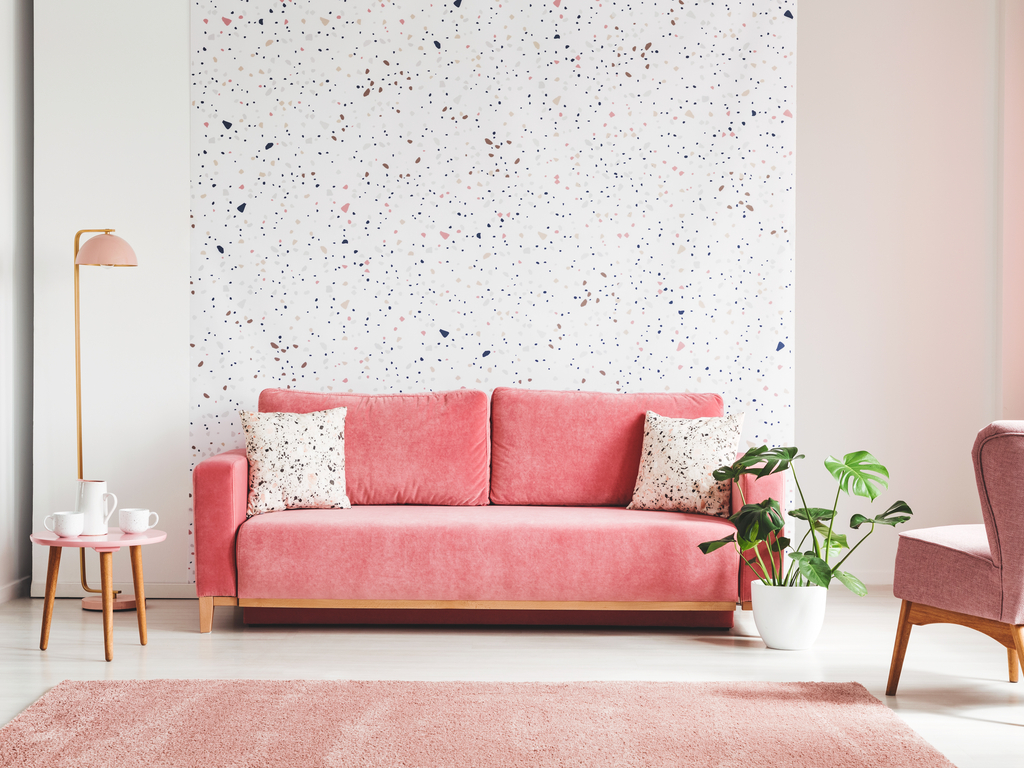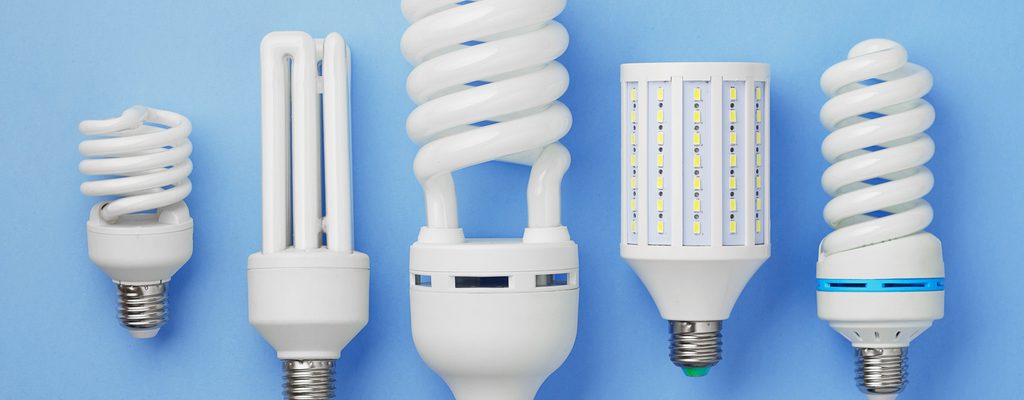Your living room shouldn’t be the only room in your home that showcases your style – it’s time to show your bathroom a little love too! Wondering how to get started? Here are 7 tips, and plenty of inspiring examples, to show you how you can transform your bathroom into a space that you can be proud of!
1. Use Striking Wall Colors
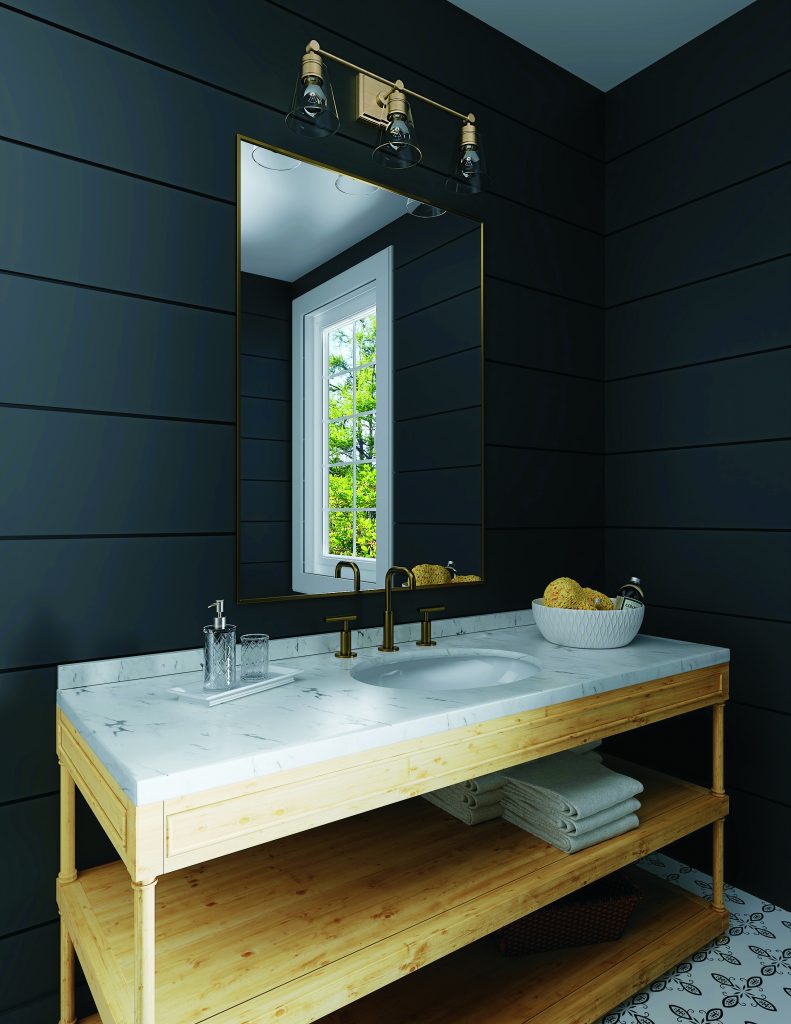
Coloring with contrasts make for a striking match with any vanity set. A simple, yet functional brass light fixture ties the whole look together, while still providing the bright light you need to get ready every morning.
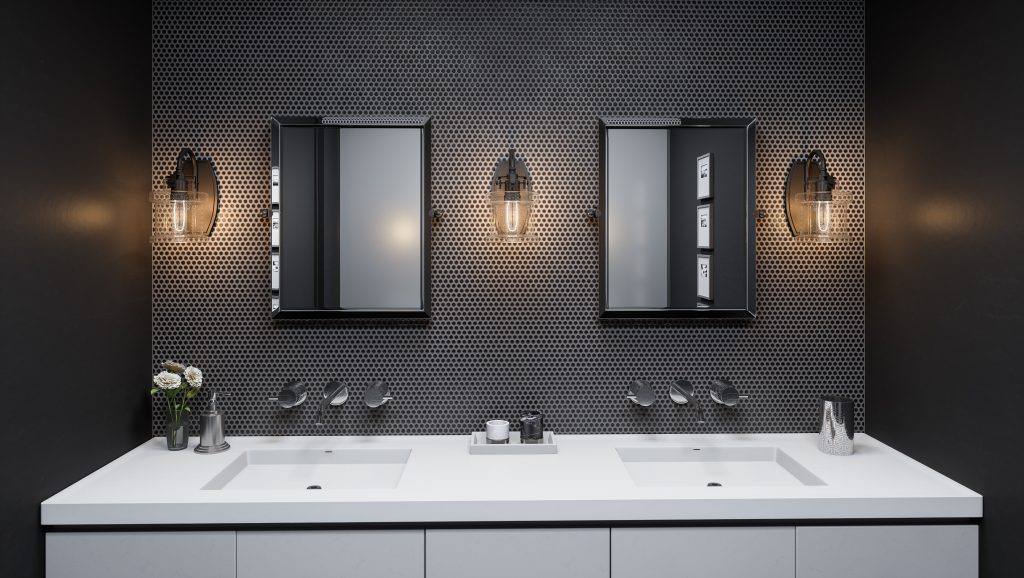
Sometimes, simplicity makes for the best design. Matte black task lighting, bright yellow bulbs, and a textured black backdrop create a truly showstopping combination, adding a dramatic effect that’s sure to leave any guests talking.
2. Color-Coordinate Your Hardware
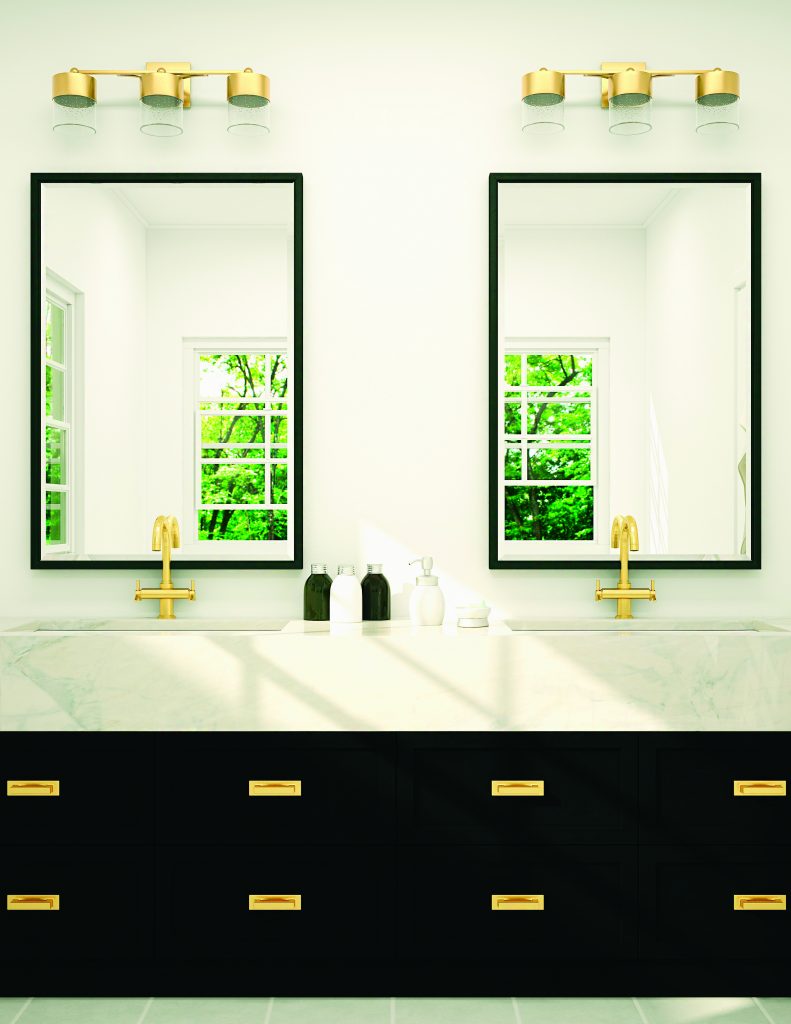
Make any vanity look luxe with gold features. Coordinate your drawer handles, faucets, and light fixtures for a put-together feel. Especially when paired with simple blacks and whites, these accents really shine!
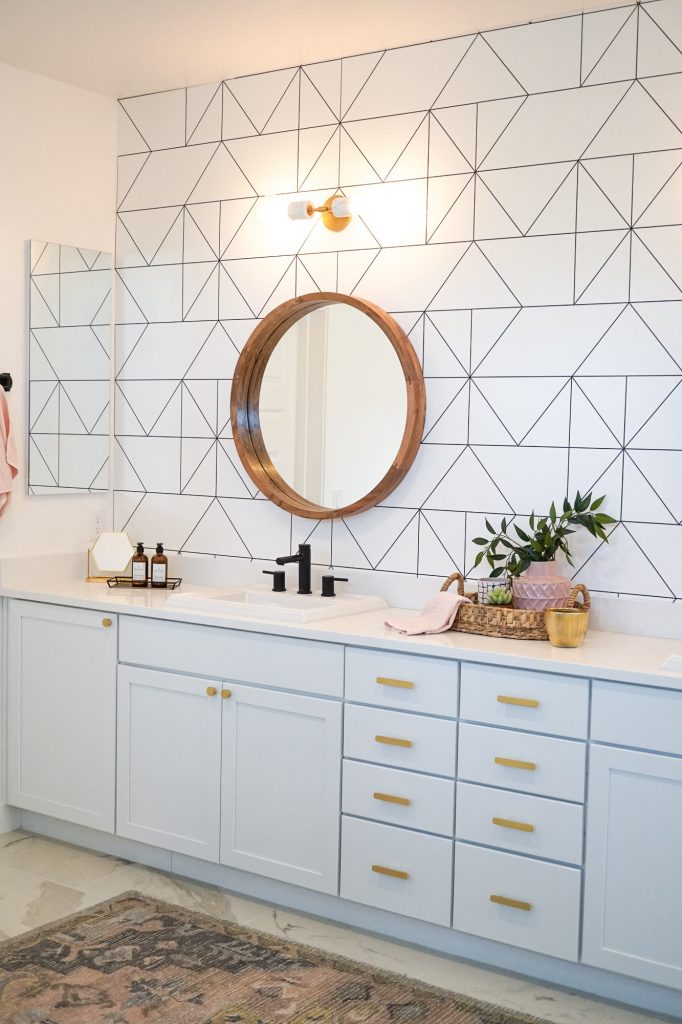
This bathroom uses a brilliant geometric design as a wall accent, then simplifies the space with a clean-cut, over-the-mirror light fixture in a pretty accent color. The result is an engaging, but not overly busy, bathroom look.
3. Use Chandeliers to Make a Statement
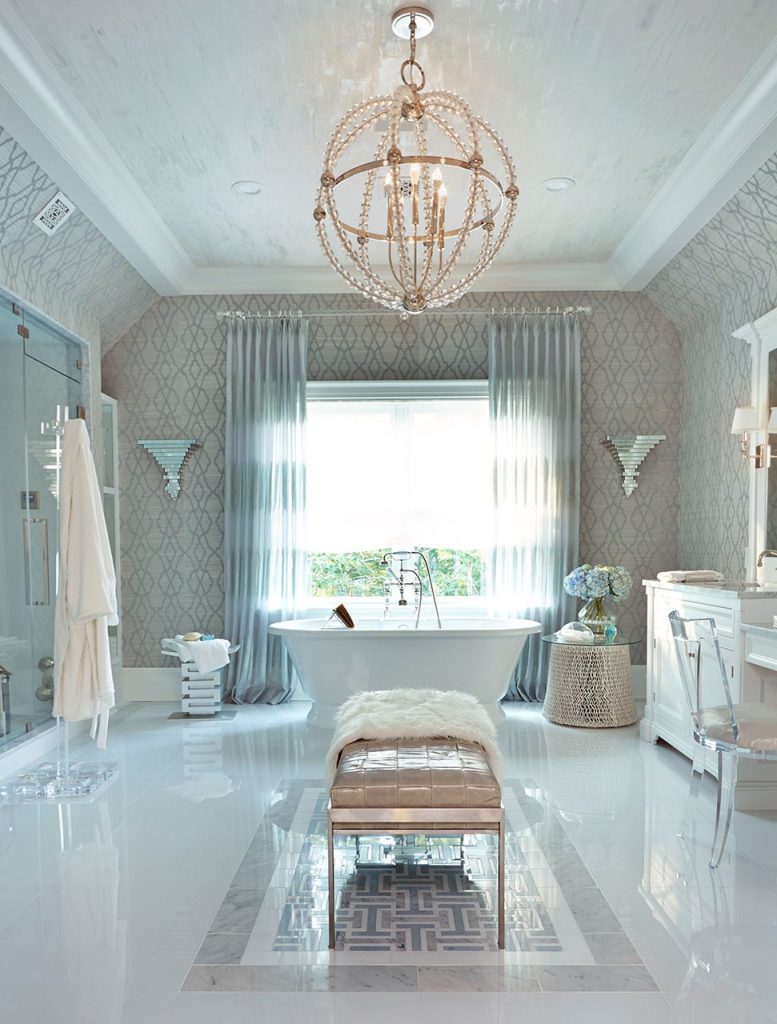
Create a primping room fit for a Hollywood A-lister by using some surprisingly simple décor essentials: a classic vanity, glamorous chandelier, and patterned walls. The result? A bathroom with a touch of flair, lots of style, and a slight air of drama. We love it!
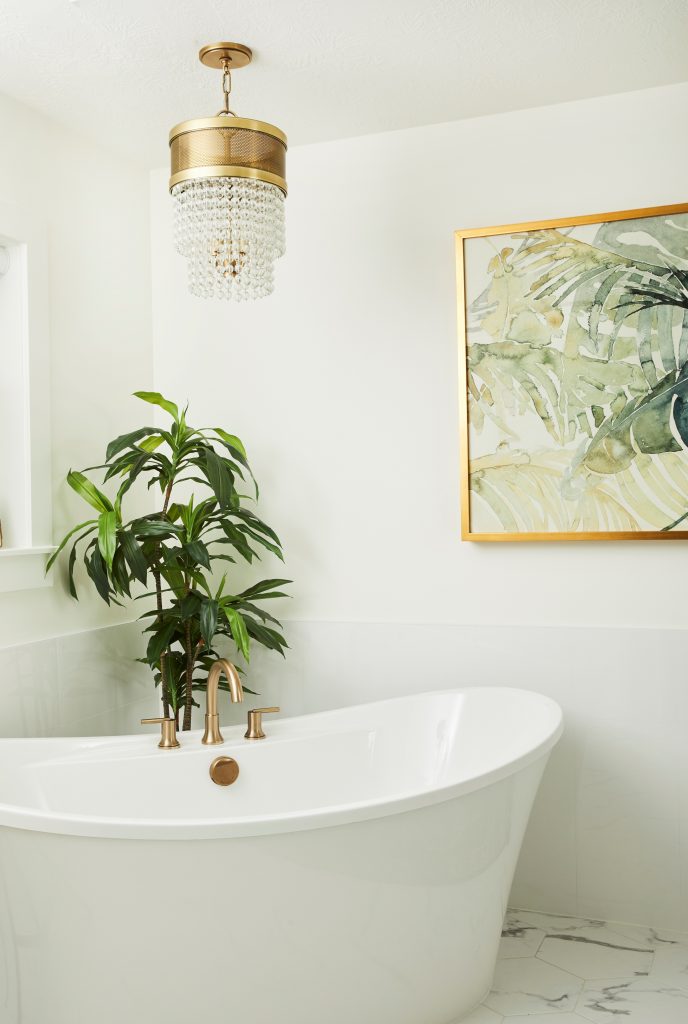
Want a more understated room with just a touch of glitz? You can still lounge in luxury as you soak beneath a dazzling chandelier.
4. Mix Natural and Modern Elements
Bring all of the soothing spa vibes to your own bathroom while still keeping it chic. Here, natural wood elements are balanced with sleek, simple light fixtures and mirrors that provide an understated modern touch.
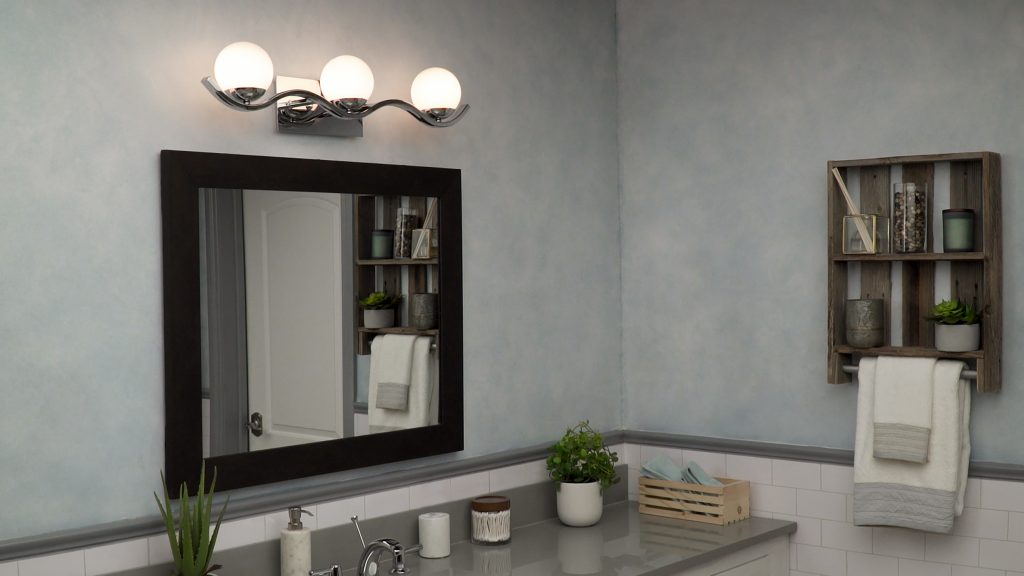
This bathroom makes a great use of natural touches with wooden shelves and small potted plants. To top it off, the light fixture’s wavy, modern design sends an organic “go with the flow” impression that matches the tone of the room’s décor.
5. Choose Bold Color Accents
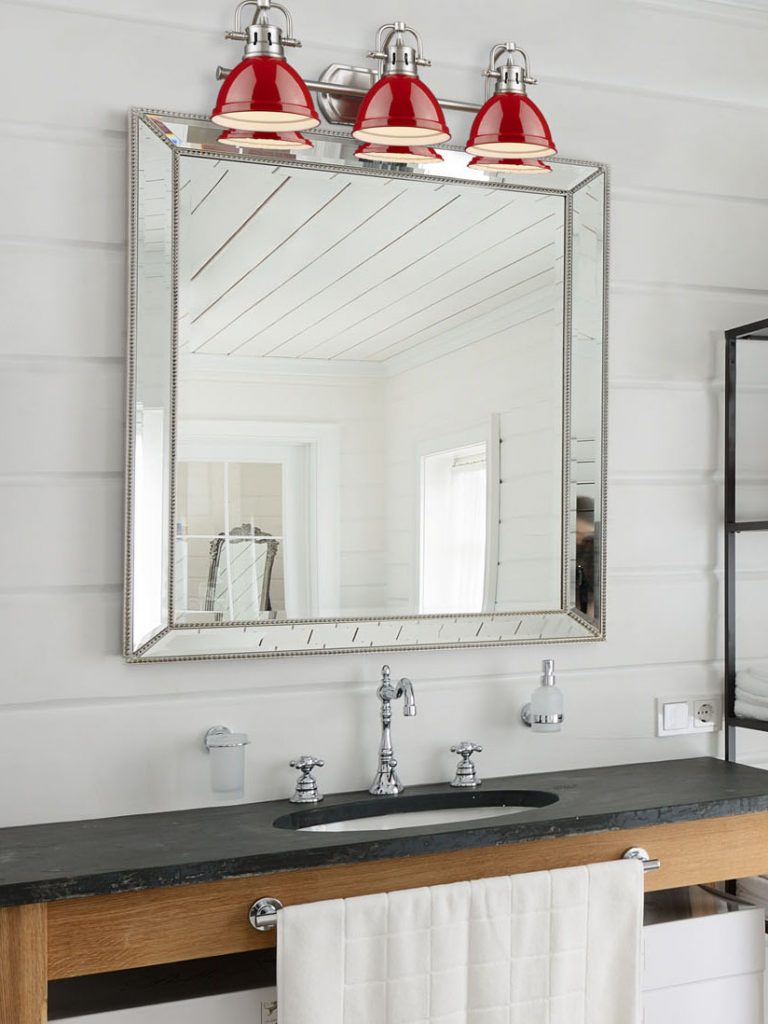
If you want a pop of color in your bathroom, but you aren’t willing to commit to a full accent wall, try colorful light fixtures! These red lights are a bright spot in a white room that draw attention and add style without being overwhelming.
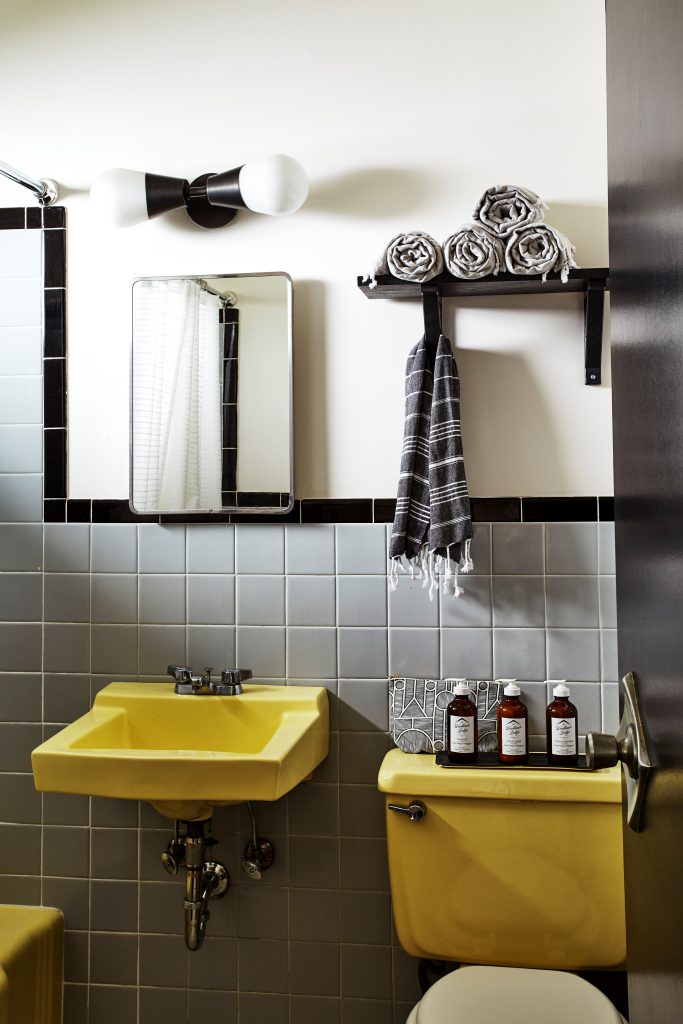
If you’ve got some fun color elsewhere, like this vintage yellow toilet and sink, that’s great! This black fixture blends with the style and lets the colorful toilet and sink truly shine.
6. Embrace Classic Elements
If you’re looking for a simple, sophisticated bathroom, this one will suit your tastes. The vanity set and walls have subtle detailing, while the silver light fixtures boast clean lines and an elegant silhouette.
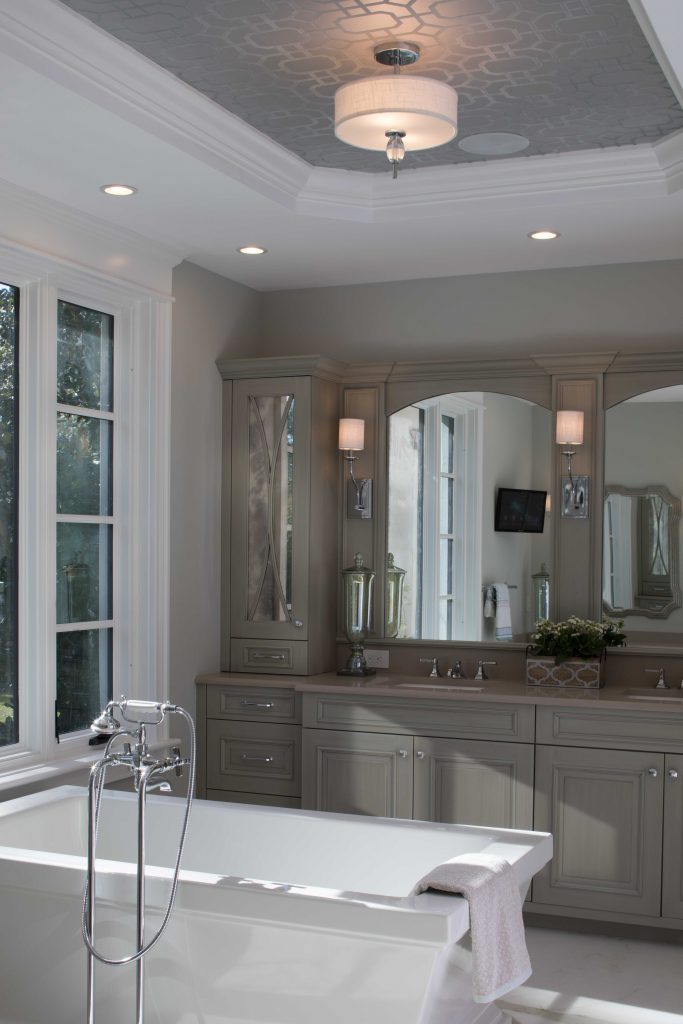
Here, a large, gorgeous vanity takes center stage. Combined with modest, shaded light fixtures, the overall effect is timeless and elegant.
7. Play Around with Interesting Shapes
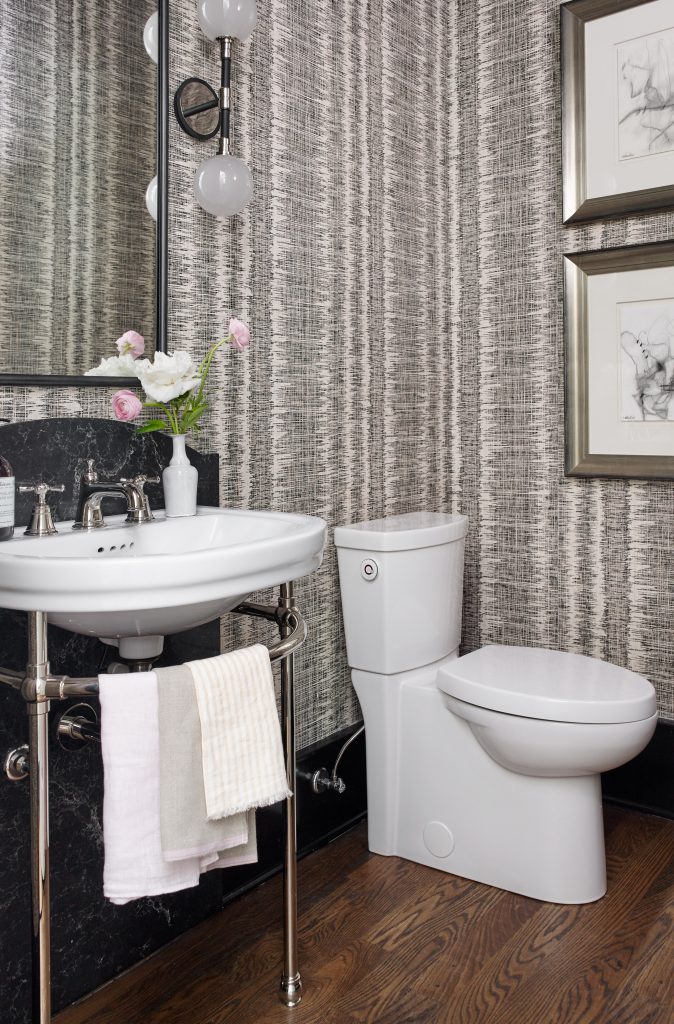
Hoping to create a quaint, charming wash room? A minimalist vanity, pretty wall pattern, and small vase of flowers are a good way to start. The light is a beautiful finishing touch: it’s simple enough to highlight the other design elements, but the double-sided fixture is unique enough to add some extra flair.
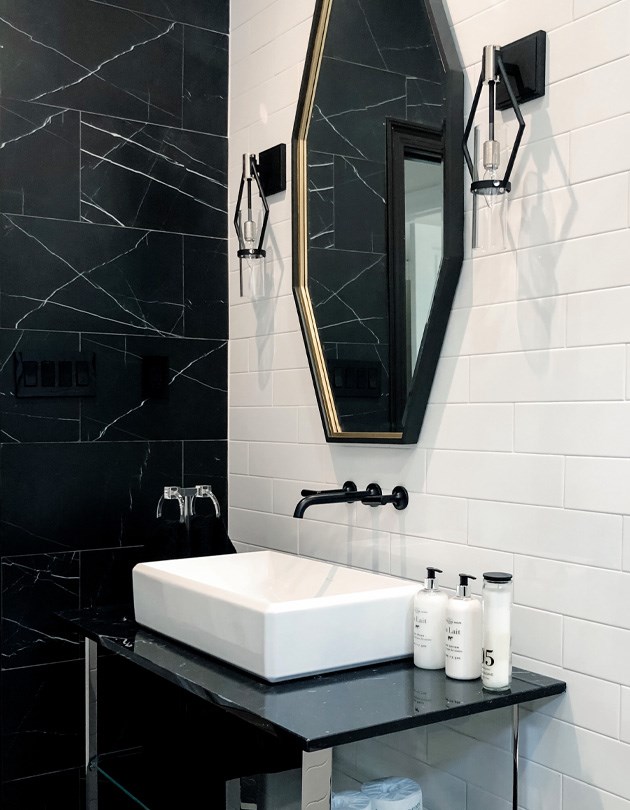
In this bathroom, diamonds are everyone’s best friend. Flanking the mirror with unusual diamond-shaped light fixtures creates a distinctive, fashionable element, making this space seem subtly one-of-a-kind.
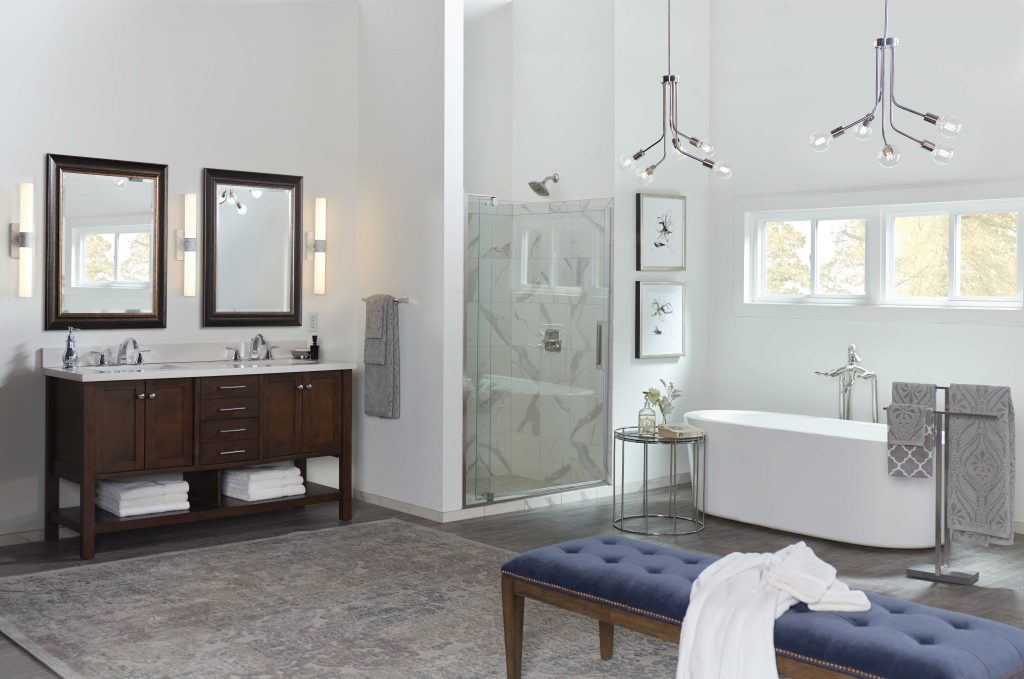
While the task lighting on each side of the mirrors is straightforward, it’s the unusual shape of the overhead lighting that commands attention in this modern bathroom. The overall effect? A bathroom that’s stylish, sleek, and unique.
Feeling inspired? Transform your bathroom into a space that’s truly yours with any of these simple tips. Whether you add an accent wall, a colored fixture, some interesting shapes or natural elements, we’re sure you’ll love the effect! Best of luck from us here at Illuminations.
